Money and Art Are Far, Far Apart: $130 Nikon D300s & AF 35-70 F3.3-4.5 Review in the Modern Era
Why am I doing this?
Many people view photography as sort of a rich man's hobby. Something that is gatekeeped by how much money you make, and something that you can't even begin to truly experience with less than $500. But it is my firm belief that photography can absolutely be accessible to almost everyone. I personally don't like the adage of "the best camera is the one you have," it has always struck a nerve with me, but I think that the more people getting out there and creating images, the better, and equipment is one of the last things to worry about. My relationship with equipment has been a weird one though. I am a strong believer that the gear doesn't make the image, it's the person behind the camera, and I am also a believer that someone can take a good image with anything they have available. But at the same time, I constantly pursue the best equipment available out of decades of lens design and innovation, to make sure I always have the best I can possibly have. Well, I decided it was time to put my proverbial (and literal) money where my mouth was, and review some ultra budget cameras.
WARNING: I realized after writing that this review is extremely wordy and in depth. Skip to the "The Rest of the Features" section, the image comparisons in the "Extreme Examples" section, and the conclusion at the end or watch the accompanying video review on YouTube if you don't want to read through a college length essay about a cheap camera. If you're into depth and detail, well, it's here for you.
One more thing, it has come to my attention that since writing this review, D300s prices have gone absolutely insane over the course of two months. Do not pay more than $115 for a D300s, and that may take a bit of searching on your part. The D300 is readily available for $99 and for the purposes of this review, is mostly the same, but with no video mode, and no dedicated live view button. It will also need a CompactFlash to SD adapter to use SD cards. I don't know what happened that caused the price explosion, but I guess I got lucky with my $70 eBay find.
For the past year or so, I've been doing a massive amount of research into photography options from ~$75-450 and above, from the tried and true classic Canon T2i to some of Nikon's more modern budget offerings. In that research and the countless recommendations I gave to people who asked for my advice, I began to notice very distinct classes, or tiers, of quality for different budgets. For example, from $200 to $400 the quality of the camera itself is pretty steady. The T2i up to the T5i all used the same sensor, and the main difference in what you can do with $200 vs $400 is lens quality, you can go from just an 18-55 kit lens to a 24mm F/2.8 and a 50mm F/1.8 (on the Canon side of things). Lenses do a lot more for perceived image quality than the sensor in the camera ever could, and my experience with the D300s cemented that idea for me. If you have a nice, sharp, fast lens on a cheap camera, it will be a lot more difficult for the average person to distinguish that camera from something more high end. The lens impacts the "look" of the image, whereas the sensor impacts how far you can zoom in before the image starts to look like junk. This is a gross oversimplification, but it is indeed how your eyes work.
When I started my review of the D300s, I went out to shoot with my high end Nikkors that I used adapted to my EOS R. Lenses like my 105 F/2 DC, 80-200 F/2.8 AF-S, and my 35mm F/2 AI-s. These lenses, combined with the weight and balance of the D300s, allowed me to shoot at much lower ISOs than would be possible with slower, less professional focused lenses. The D300s also balances much better with my high end Nikkors than my EOS R does, and coupled with its reduced resolution, I was able to shoot at much slower shutter speeds, and therefore lower ISOs, than I could with the EOS R or with slower lenses. I quickly realized this did not translate to the experience someone on a lower budget would have. Pairing a $70 camera with a $700 portrait lens is hardly indicative of the average experience someone with this camera would have. Which brings me to the lens I chose for this review. I started off my ultra budget camera reviews with the AF 35-70 F/3.3-4.5 because it is cheap, accessible, and I thought it would provide good results. I had used Canon's FD 35-70 F/4 and FD 28-85 F/4 and the 35-70 was so utterly impressive, and so strikingly cheap, about $20, that I hoped Nikon would follow the same path, while the FD 28-85 was just a bit crap. Apparently Nikon did the opposite, the Nikon 35-70 is meh, and the 28-85 F/3.5-4.5 is, supposedly, an amazing lens, for about $60, vs the $40 of the 35-70. There is a future review coming on that lens, don't worry. But for now, I have the 35-70. So the D300s and 35-70 F/3.3-4.5 AF, what kind of combo is that? Well, a surprisingly useful one, to be honest. I considered the AF 24-50 F/3.3-4.5 for the extra wide range on a crop sensor, but it was a whole $30 more than the 35-70, and I understand that to some people, that $30 could be a breaking point. Speaking of $$$, this combo cost me $130 total, after taxes and shipping, $70 for the camera before shipping and taxes, the lens was $35 before taxes and shipping. All in all, $130 total after shipping and taxes.

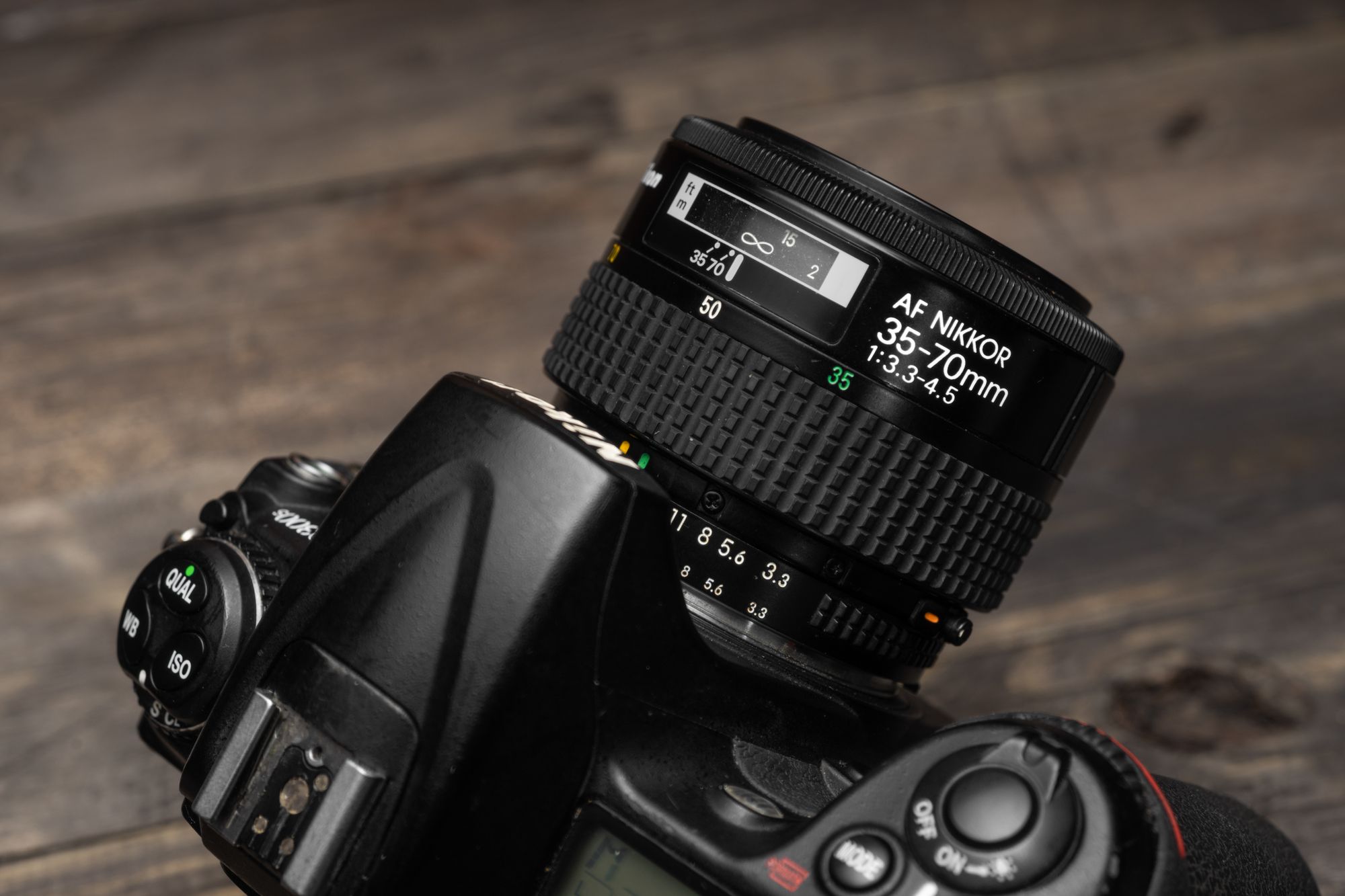
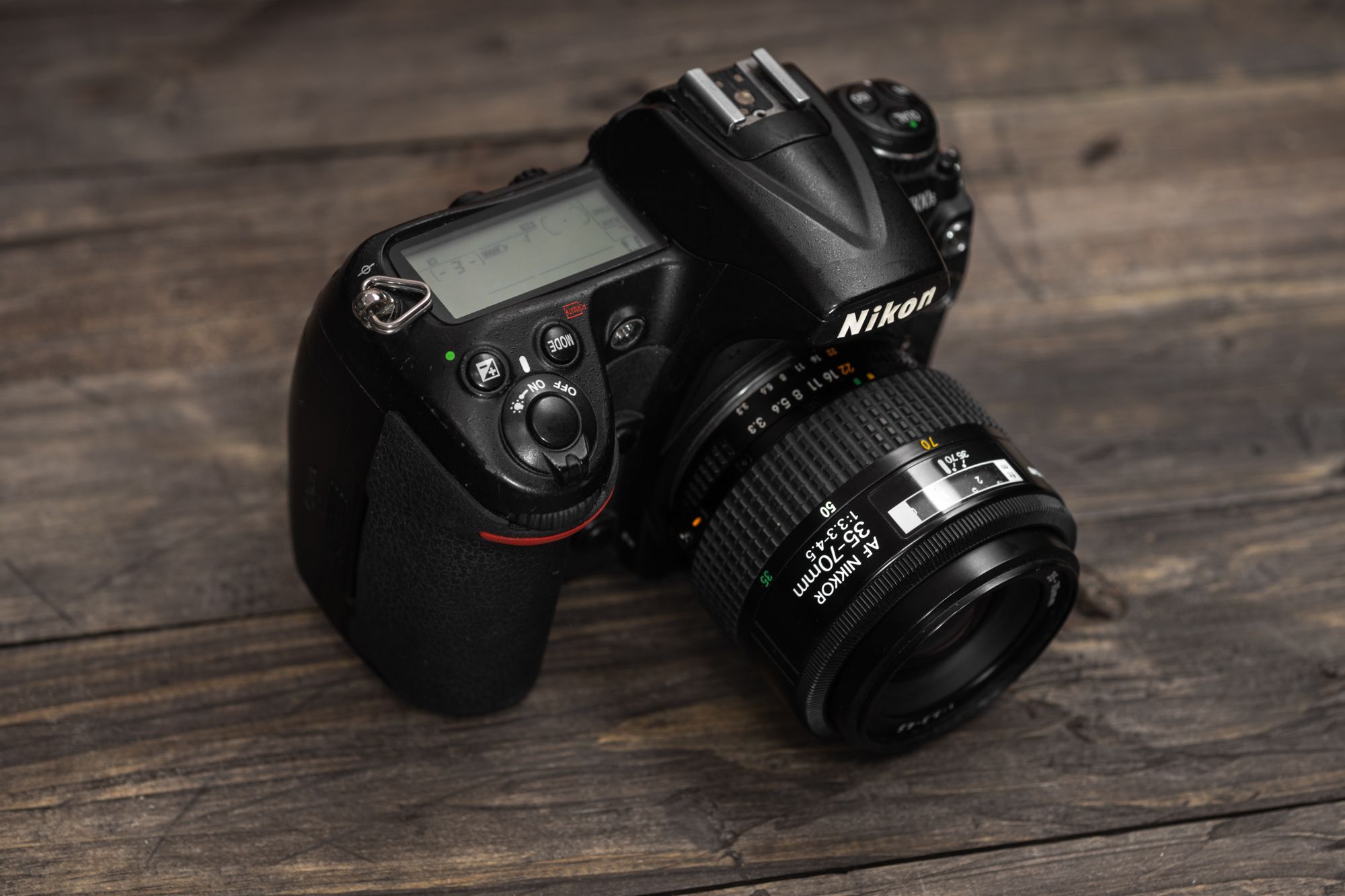
The dinky AF 35-70 F/3.3-4.5.
The D300s
So, what even is a D300s? The D300s is an advanced amateur/semi-professional DSLR from 2009, which was an update to 2007's D300. This is one of the first, if not the first, modern DSLR from Nikon. In my opinion, a modern DSLR needs live view, an advanced multi point AF system, it needs to take SD cards, and have the ability to record video, which is exactly what the D300s did, all the way back in 2009. The D300 had live view, though it was a bit janky and hidden behind menus, but the D300s added a dedicated live view button, and the video recording mode. The D300 also had the same 51 point AF system with automatic subject detection and continuous-AF subject tracking, but both of those are fairly rudimentary even on the D300s, I had some ok luck sometimes but other times it left a bit to be desired. The D300s can record video in a whopping 1280x720p at 24 FPS. The AF is also pretty junk in video mode, you have to hit the "AF On" button to get it to focus, or focus yourself, and the camera doesn't have any on sensor AF sensors, so you have to wait for contrast detection. The video recording limit at 720p is also a whopping 5 minutes...yeah...But all in all, it's the oldest, possibly cheapest camera I would call a modern DSLR.
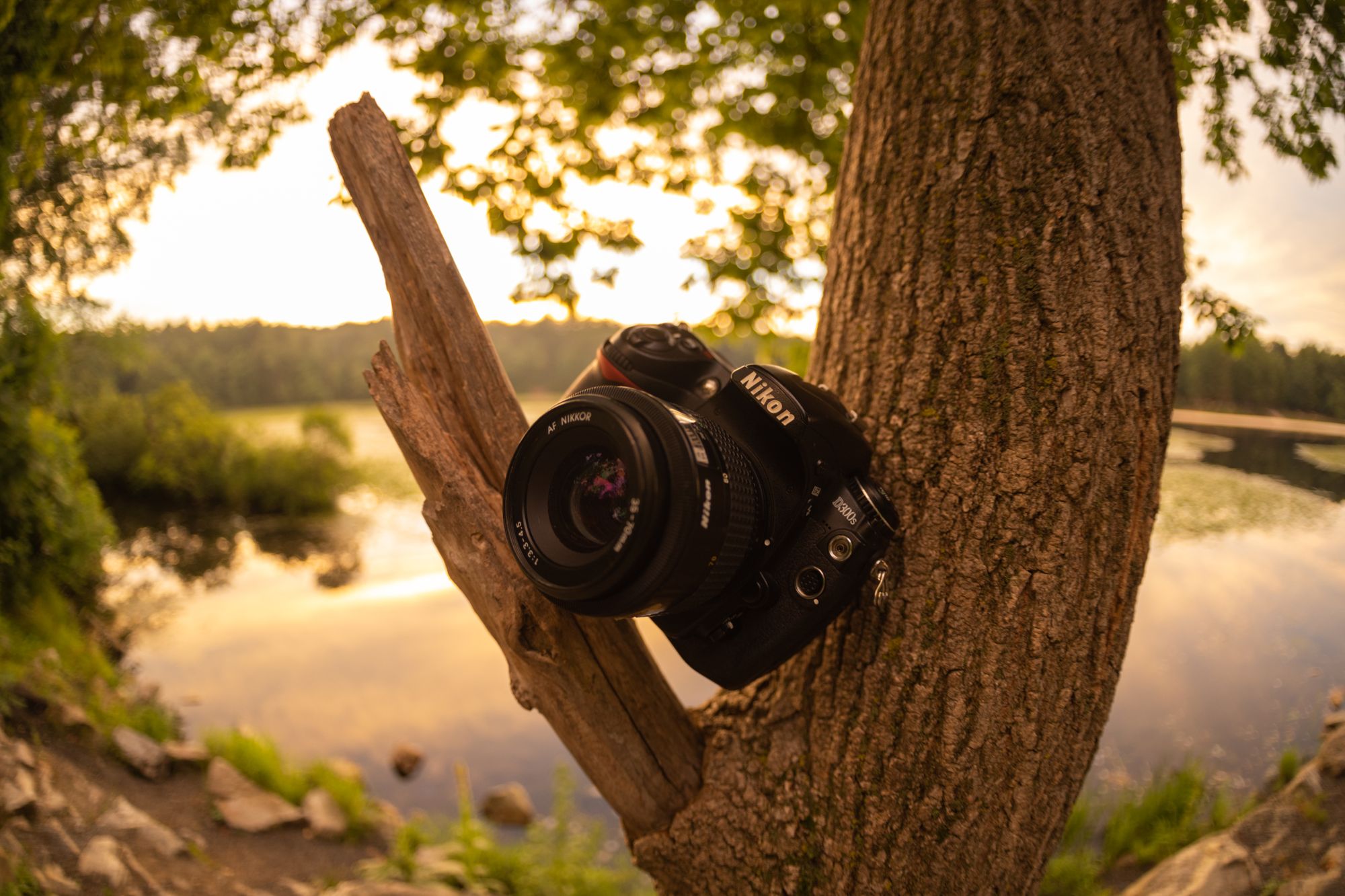
The D300s in a tree.
The Rest of the Features
So, the D300s has an "advanced" 51 point AF system with automatic subject detection, a live view mode, video recording, and takes SD cards, but what about everything else? Well, the camera features Nikon's tried and true 3D matrix metering system, which in my use was actually fairly accurate in nearly every shot I took. I don't typically rely on a camera's internal metering or auto exposure, but the D300s didn't have the exposure latitude to really go too far over exposed or under exposed that my newer cameras do, so accurate exposure really came in handy. It can shoot in 12 or 14 bit RAWs, TIFFs (for some reason), and of course JPEGs from basic to fine, compressed or "un"compressed. It has an AI ring for use with classic manual focus Nikkor lenses, which is a massive plus in my opinion because it allows people with lower budgets to acquire even greater image quality than can be had with a lot of newer, more expensive options. It also has a screw drive for use with all Nikon AF series lenses, which is another huge plus for people on a budget. This isn't to say it can't be used with the newer AF-S models, quite the contrary actually. This camera operates really well with AF-S lenses in autofocus mode, and also has the electronics necessary to operate the very new "E" series lenses, not that I see any reason to pair lenses worth $1000s with this camera, but you can if you want. And of course, it has the classic MPSA modes of most DSLRs. M meaning manual; P meaning program auto, in which the camera determines both the optimal shutter speed and aperture while you set the ISO; S meaning shutter priority auto, in which the shutter speed stays the same while you adjust ISO or aperture; and A meaning aperture priority auto, in which the aperture remains the same while you adjust the shutter speed or ISO. By far the most useful mode for every camera ever in my opinion is aperture priority auto, so that is what I recommend using this camera with.
Using the D300s
So, what was it like using a $70 camera? Well, not that bad, actually. With the 35-70, AF was reasonably fast and always accurate. The subject detection worked perfectly with birds in flight against a sky, but if you have complex backgrounds and a subject not quite clear, make sure to select an AF point. Selecting an AF point isn't as fast as I'd like, but in AF-Single mode, you can just quickly use the center AF point to get accurate focus, then reframe the image to take the shot. The AF-Continuous mode was...hit or miss. In many situations, following a distinct subject was perfectly fine, but trying to, say, select a specific part of an object and keep focus on that specific part, confuses the camera and causes it to suddenly jump AF points seemingly at random. So I'd say it's a decent AF system but keep in mind the limitations of processing in 2009. It's accurate unless you need very specific focus on a complex subject, in which case you should not use AF-Continuous or subject detection, which in my opinion is perfectly fine. To be clear, I don't use AF in my daily shooting at all. I use entirely manual control on my EOS R, with adapted manual lenses, but I have used enough AF systems to know if something is absolute junk, and this is not junk.
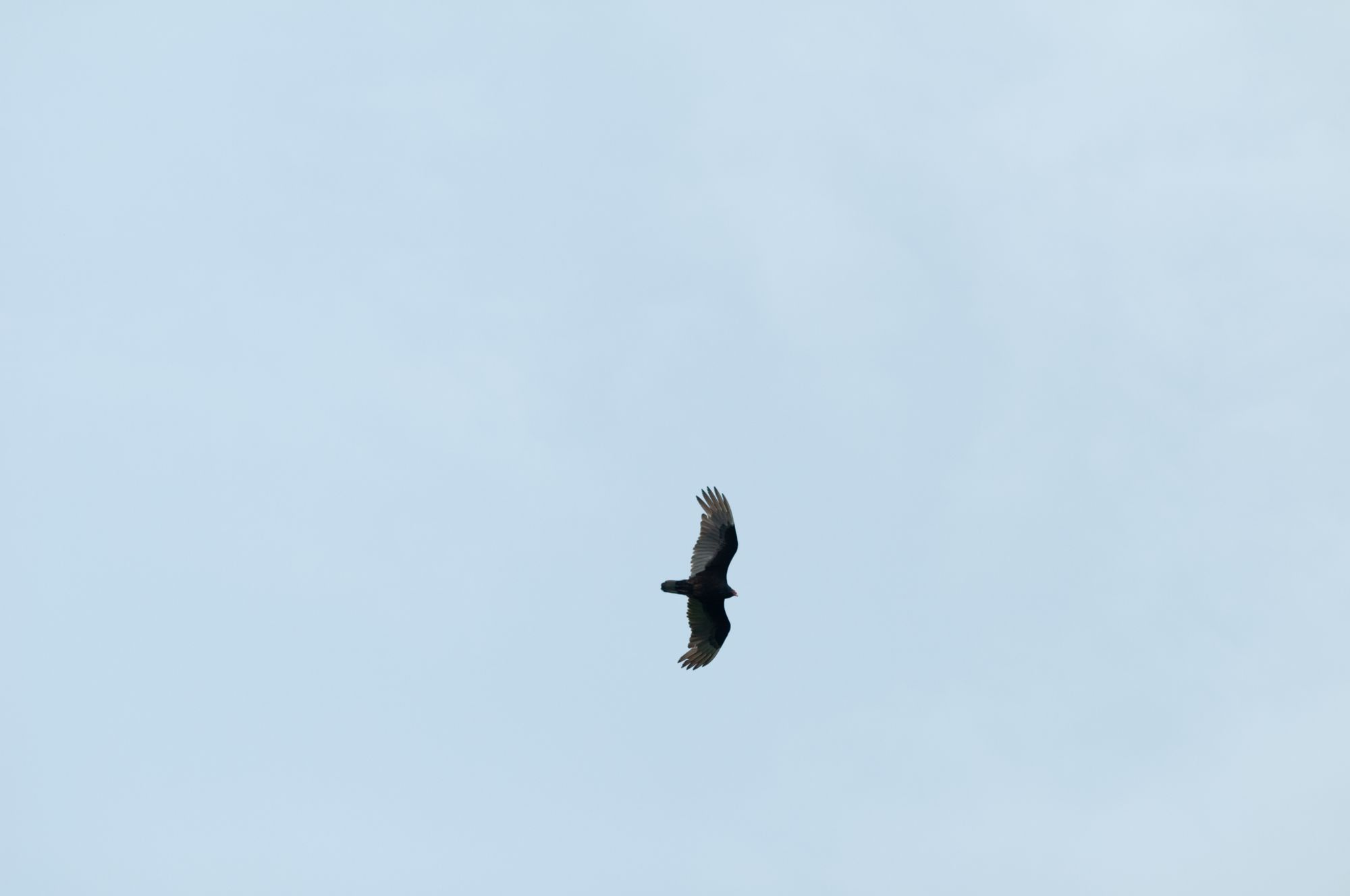
Point and shoot photo of a buzzard using the auto subject detection and my AF 105mm F/2 DC. Very accurate and quick focus.
So that was when used with the basic AF 35-70 F/3.3-4.5. When used with an AF-S lens, which almost all DX (meaning for crop sensor) lenses are, this 51 point AF system is truly pretty great. The subject detection still has limitations, and tracking can still get confused, but the accuracy and speed it can act at is strikingly good. When used with my 80-200 F/2.8 AF-S, within a quarter of a second I could aim at a small bird I saw flying in the sky, focus, and take a perfectly focused image. Not on the level of my EOS R, but absolutely spectacular for a budget camera and an amateur or higher level user. Oh, make sure in the camera settings, you select "focus" as priority in the autofocus menu for AF-C priority and AF-S priority if you want the camera to wait to take the photo until it is perfectly focused. Otherwise it will prioritize speed.

Perfectly focused small bird in flight. I'm not a bird photographer and I only had my 80-200 so it isn't very close.
Autofocus aside, the D300s is automatically a step above other super old ultra budget digital cameras because it can take SD cards. SD cards are honestly the only storage medium I would like to even consider when buying a camera (aside from the obvious high end CF Express). Not only does the D300s take SD cards, but it will accept even the most modern, high end SDXC cards, which makes sense for a budget camera because SD cards are dirt cheap these days. I only use SanDisk ImageMate Pro cards, which are a Walmart exclusive, but the SanDisk Extreme Pro is the exact same thing for the exact same price. And at $30 for a 128 GB card and $18 for a 64 GB card, there is no reason for even the most budget of users to not get a good card. Though if you are on the very low portion of the spectrum and just need to use a random SDHC card you found around the house, don't worry, that will work great with the D300s too. A lot of sellers even include a basic SD card with the camera, which also works just fine.
Handling
The D300s is a moderately heavy, tough as nails, semi-pro DSLR. It's got a really nice grip feel, and just enough chonk to feel like you're holding a proper tool, without weighing you down like crazy. It balances really well with higher end and heavier lenses, but balances just fine with the cheaper options as well.
Sadly this camera comes from the era where Nikon didn't really consider ISO changes a constant thing. You have to move your head from the viewfinder and hold the ISO button with your left hand and change the ISO with one of the dials, or memorize its position and move your whole left hand to hold the ISO change button. You can't even set the function button to change the ISO, the most useful thing for it to be is for exposure bracketing, which works pretty well. Aside from needing to either lift your head or move your hand off the lens to change the ISO, the handling in general is fairly standard for an old camera. You have two control dials that can be set to turn either direction, and a couple of buttons with set functions like flash exposure compensation, and one user customizable function button which, like I said before, is basically best used as a bracketing button.
The high speed burst shooting is actually very, very fast, even in AF-Continuous mode and with shutter press priority set to focus (which tells the camera not to take a picture until perfect focus is achieved). I haven't had a chance to use it with high movement sports in AF tracking mode, but with the experiences I've had in basically every other situation, I would trust the D300s to perform fairly well.
Image Quality
Well, this is one heck of a topic. From megapixel warriors to bokeh enthusiasts, the internet is full of people with differing opinions on image quality. To give you the best information to work off of, I'm going to tell you what I value when it comes to image quality. For the most part, everything I do comes down to tonal and contrast clarity. What the heck that means is basically when transitioning from light to dark parts of an image, is it a clean change or is it hazy and kinda muddled, as well as color accuracy in those transitions. Have you ever taken a photo of something bright in a dark room with a phone camera, like a monitor or something along those lines? There is a heavy haze that normally comes along with a phone camera in that situation, and that translates to standalone cameras as well, albeit to a lesser degree. My EOS R has almost no lack of tonal or contrast clarity, and I can underexpose an image heavily, and just brighten it in post with little to no consequence in almost every situation. The D300s, on the other hand, cannot. It has very little ability to brighten an underexposed image without excessive tonal haze making the image look very unnatural. It also suffers from the same haze issue with contrast transitions as well.

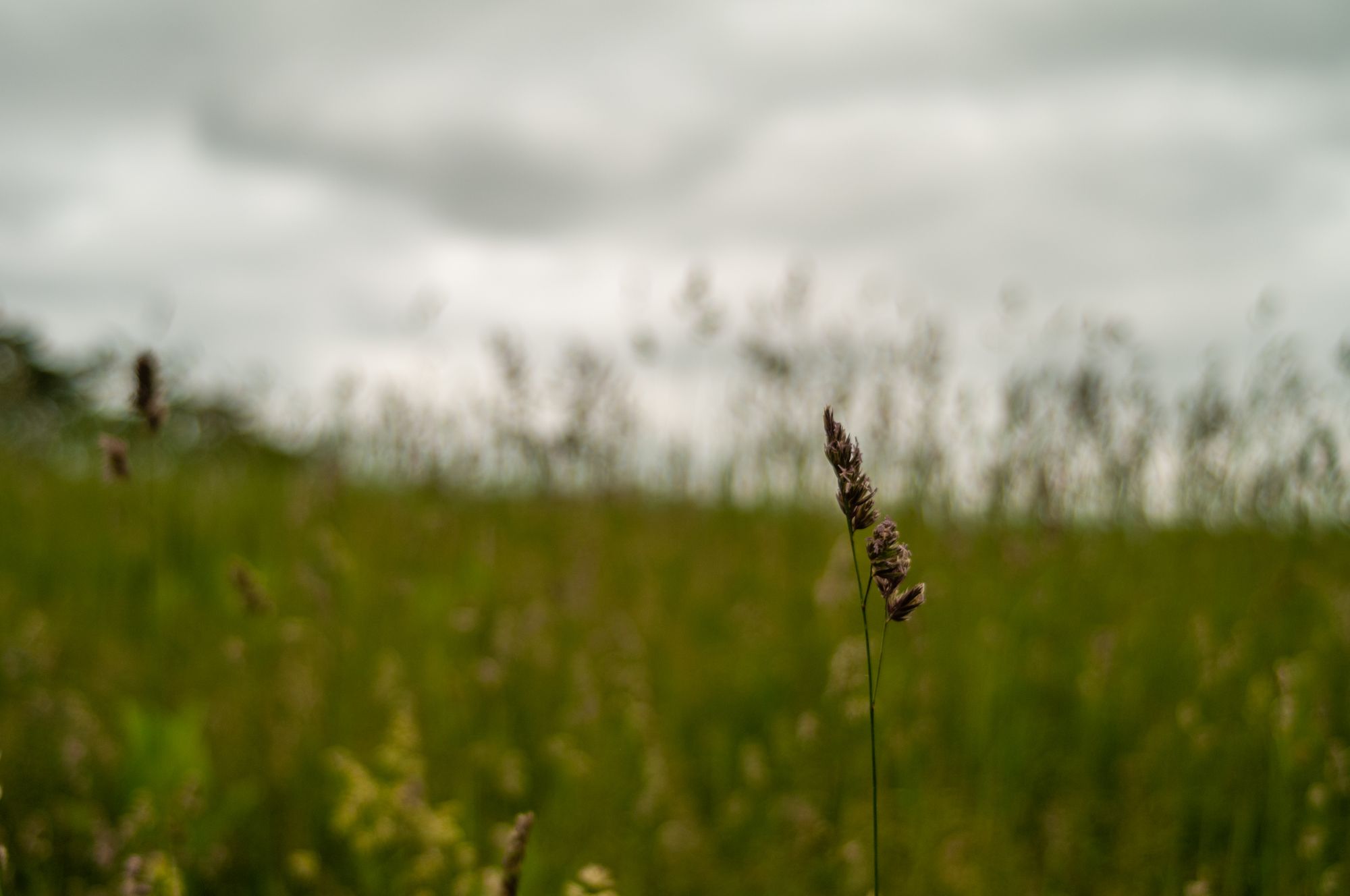
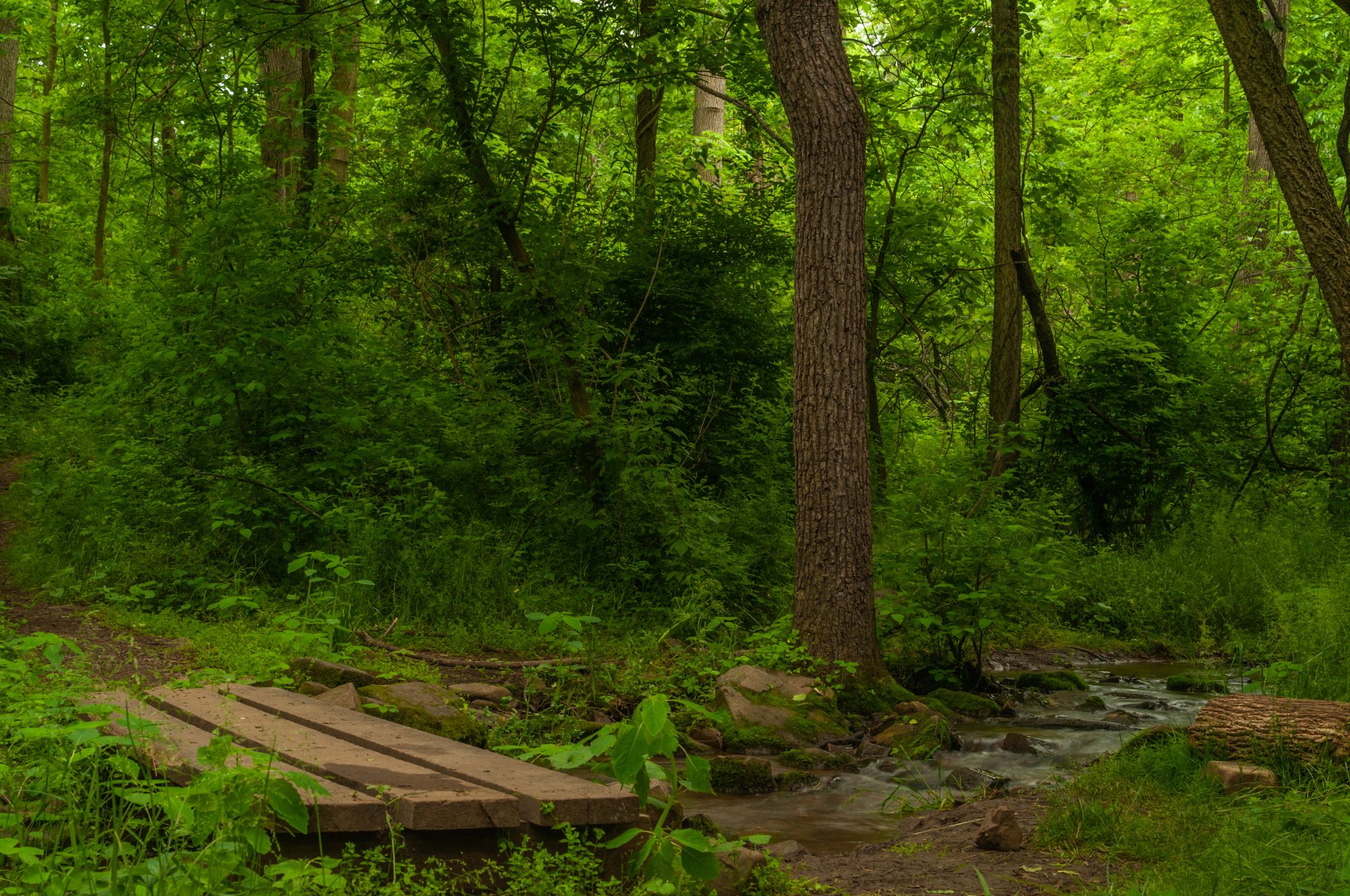
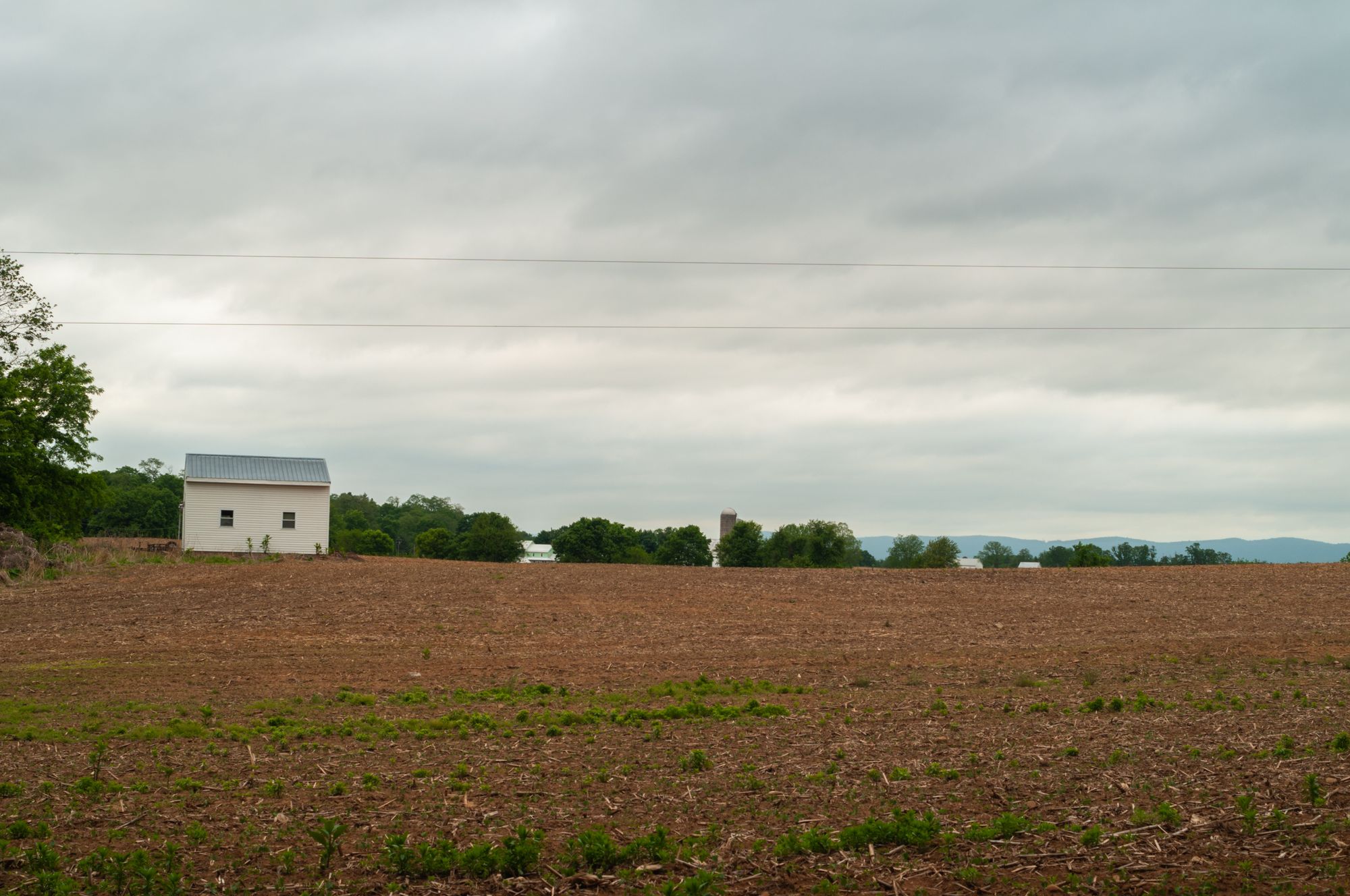
A quaint farm, a field, a little bridge in the woods, and a shed.
You may have noticed by now that I have gone this entire review without once mentioning megapixels, and that was intentional. I see people get caught up with megapixels far, far too often. "My phone has a 108MP camera lololol way better than 12." This D300s has a mere 12 MP, but that doesn't stop it from taking good images, and it sure puts every phone camera to absolute shame (yes, even the 108MP meme cameras). The sensor technology in the D300s is rather old, but it was advanced enough for its time to produce great images even in 2022. With good exposure and a user with lots of practice, this D300s has no issue taking solid images up to around 800 ISO. That doesn't sound like a lot compared to the max ISO of many modern cameras, but I don't consider max ISO usable for just about anything. This D300s goes up to 3200 ISO, and I never recommend anyone use it at that setting, the noise is awful. It technically expands to 6400 but that's even worse. I don't even use my EOS R at 3200 ISO, I stay 1250 or below. At 800 ISO on the D300s, dynamic range is still very good, clarity is great with good exposure, and the sharpness doesn't suffer too much from noise, but given it's 12 MP that isn't very surprising. Now I keep talking about good exposure, which is determined by the camera's integrated meter. The D300s has Nikon's very well tested and perfected matrix metering, and gave me solid exposure shots every time. I had to adjust how I shoot to accommodate its lack of ability to underexpose, but once I got past that and started using it without any exposure compensation, it was very accurate and very good. (Future edit, I used it with the DX 10.5mm fisheye, and it gave very underexposed images if a bright light source made it into frame. The D300s' meter is not smart enough to understand that the lens is a fisheye and point light sources should be ignored.)
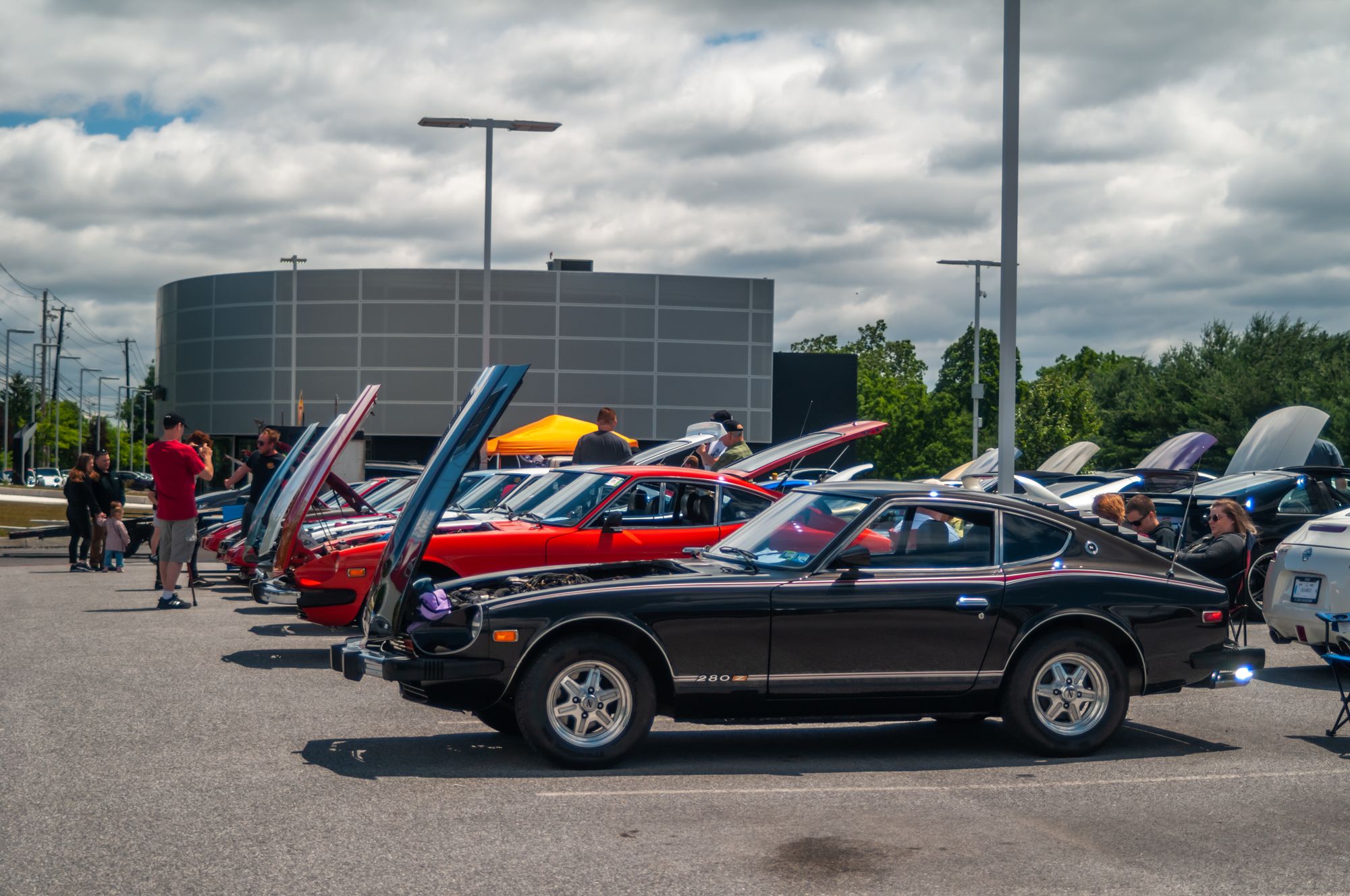
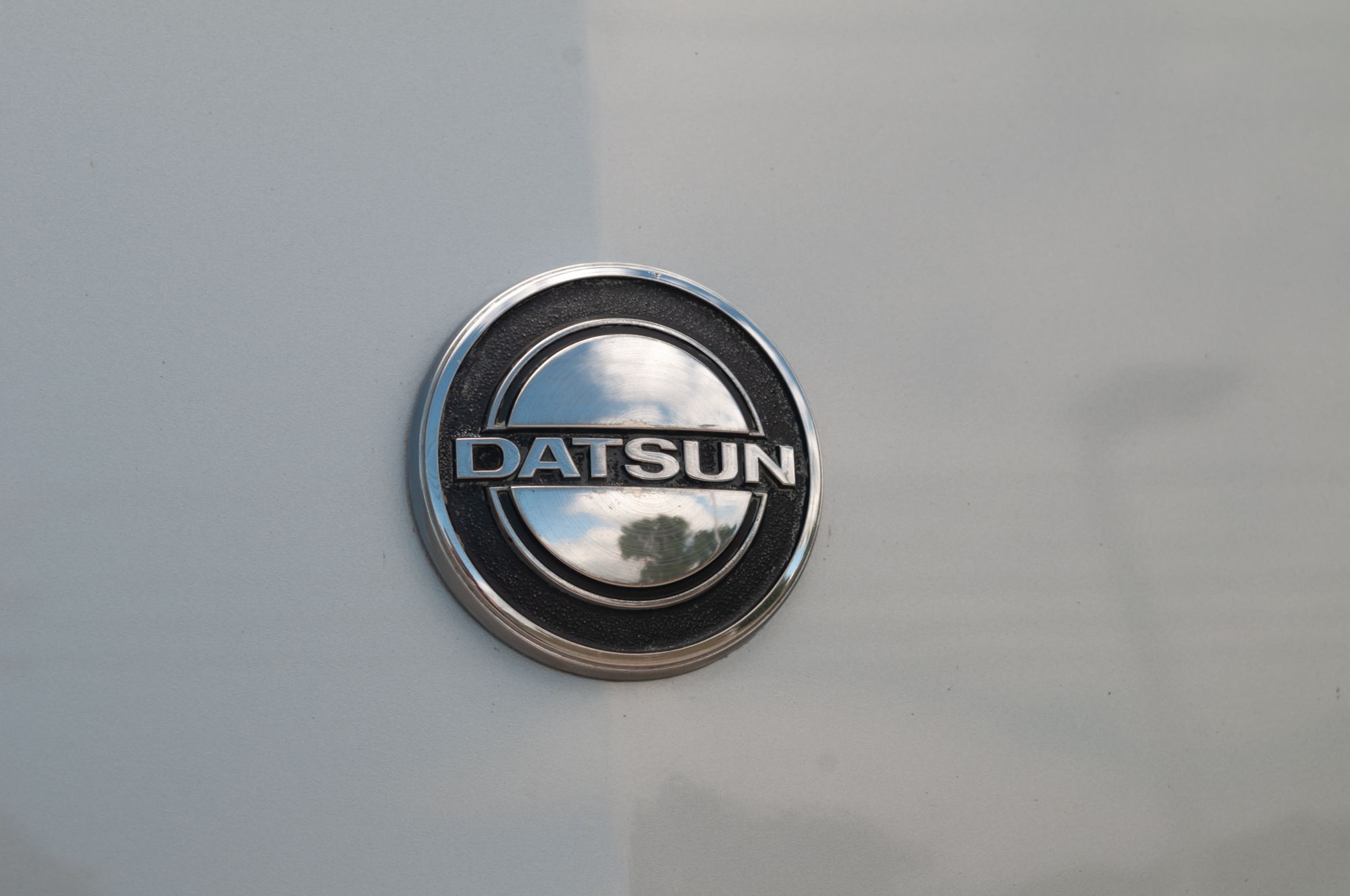


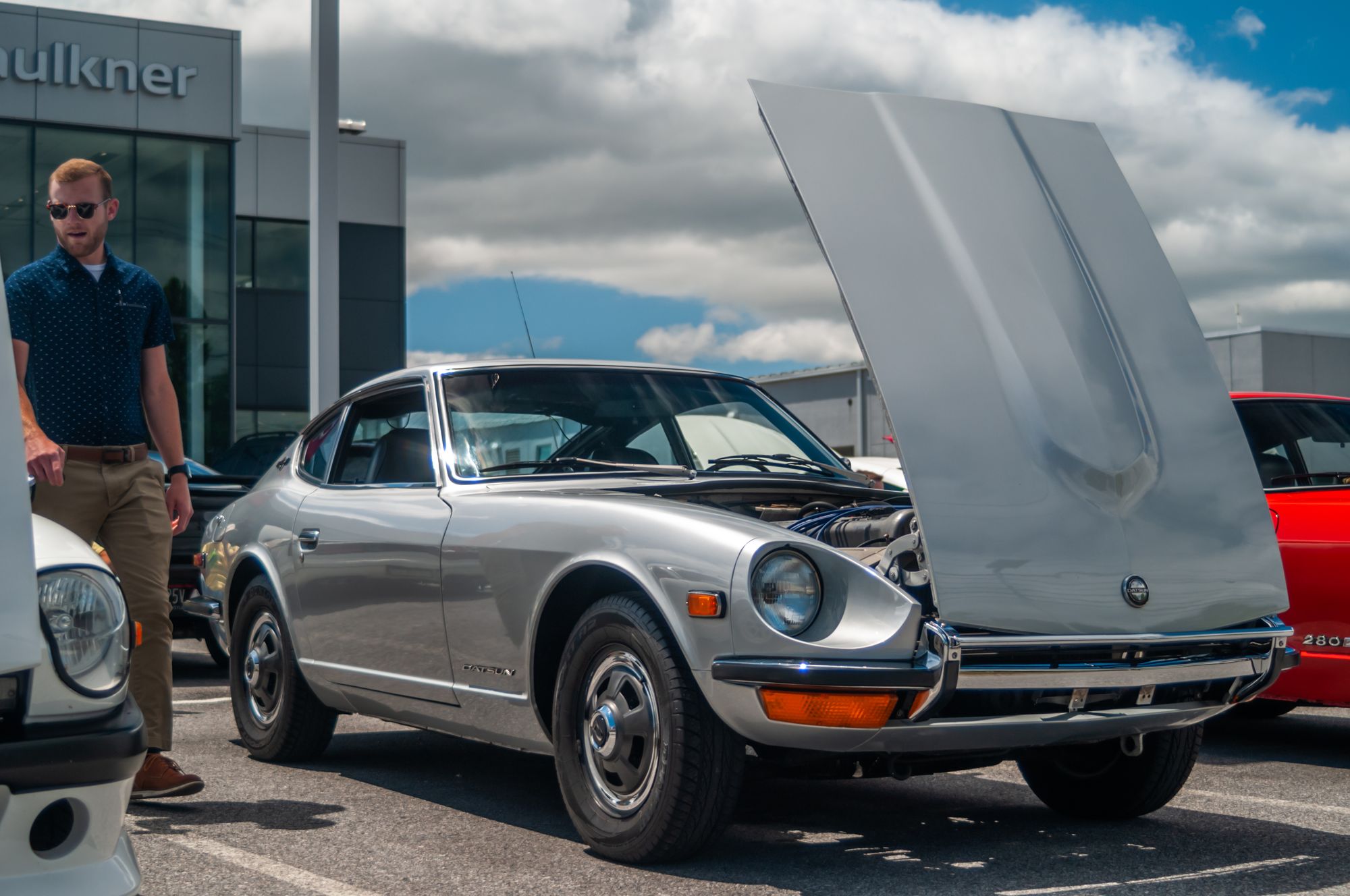
Images taken on the D300s with no exposure compensation, lightly edited for exposure/color adjustment. Taken with the AF 35-70 F/3.3-4.5.
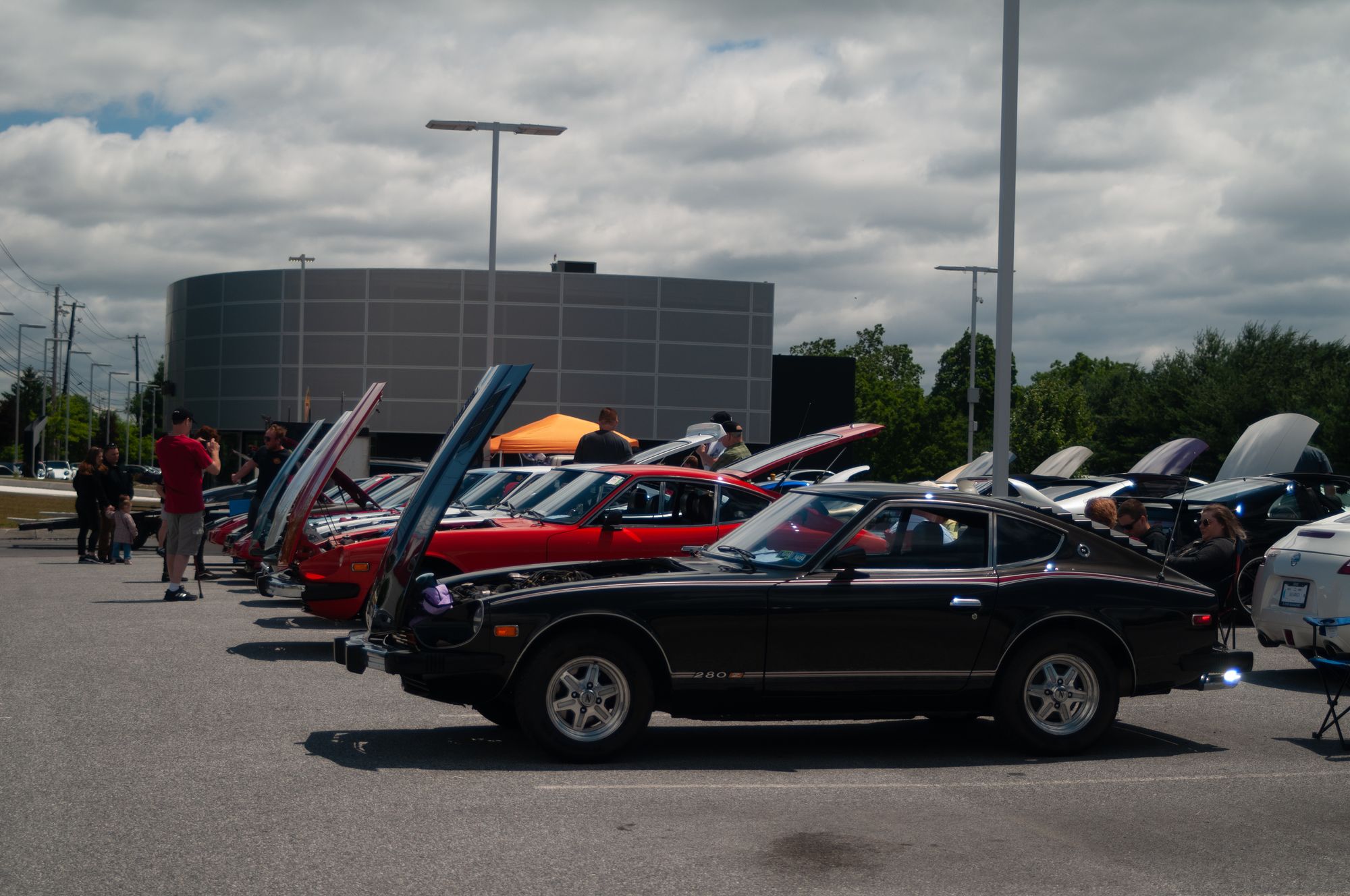
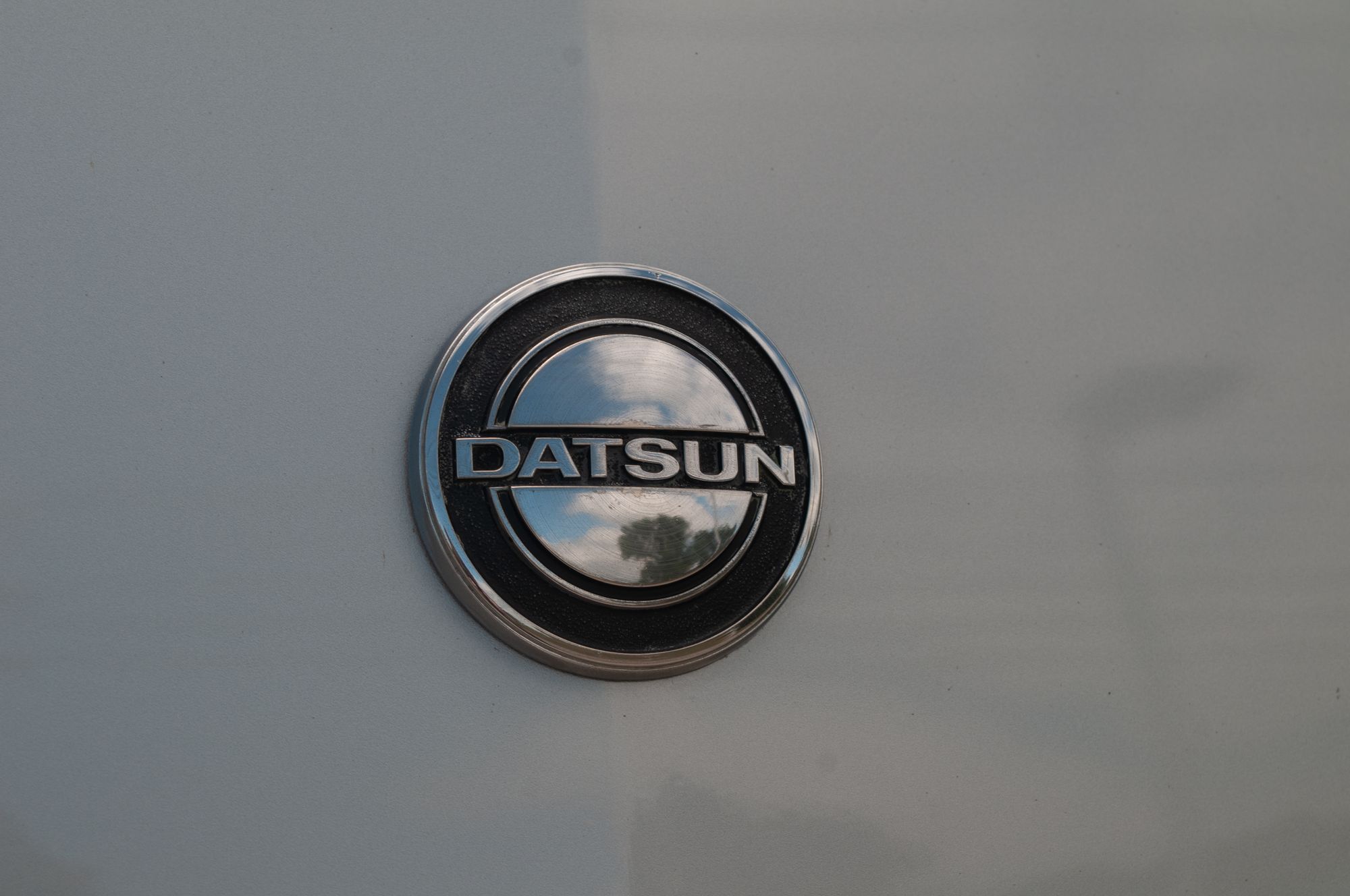


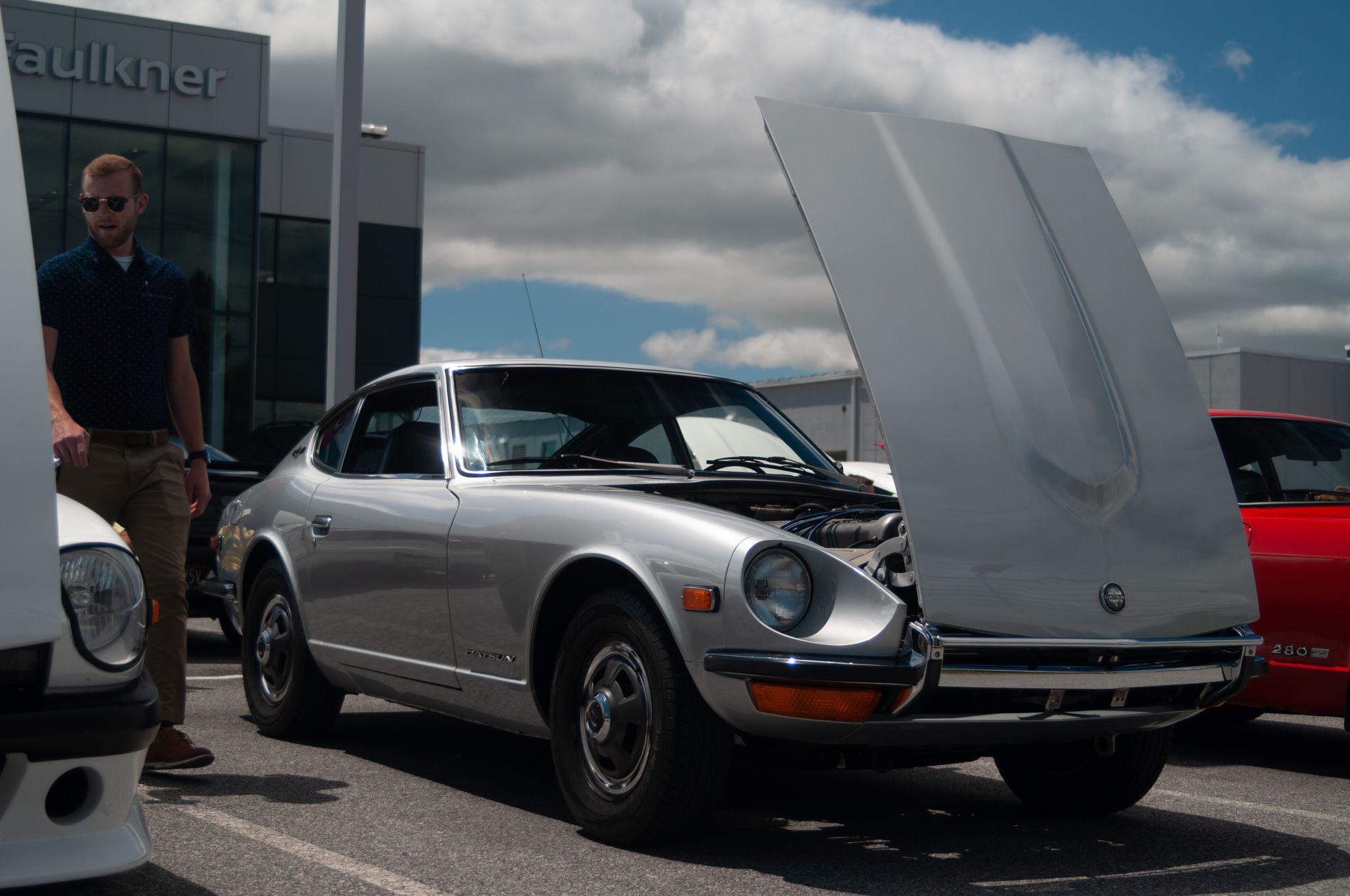
Unedited JPEGs of above photos.
A lot of the visual changes you see in my edits can actually be done in camera with the built in image processing of the D300s. While I totally hate the idea of ever using such a thing, if you can't get editing software or are a stickler for using images straight out of camera, the options are there, and you can set multiple custom profiles. The image processing on the D300s is NOT optional. I tried my best to get processing free images, even shooting TIFFs, but it is no use. All images taken with this have some degree of image processing, which I normally wouldn't consider such a problem for the average photographer, but it causes issues with faster lenses with more spherical aberration (also known as "glow"). The processing causes the glow to be accentuated to a degree, and can look very, very bad when underexposing something like bright white skin. Even though the D300s processing isn't optional, I definitely recommend just getting some editing software, it will give much better results than playing with the processing settings of the D300s.

The glow issue from the processing and some of the tonal clarity issues with underexposed images. (Shot with the 85mm F/1.4 AI-s at F/2)
Whew, not only is that glow awful, but look at those colors! That vein is blue and green! I'm pretty sure if my blood was blue and green, I'd be dead, so thanks Nikon for that unnatural, unholy look.
Color
Now on to color! This is what I heard Nikon does really well, and I have to agree. I prefer Canon colors because they offer a very neutral yet vibrant, easy to control and tweak color profile, but this Nikon really makes colors pop.
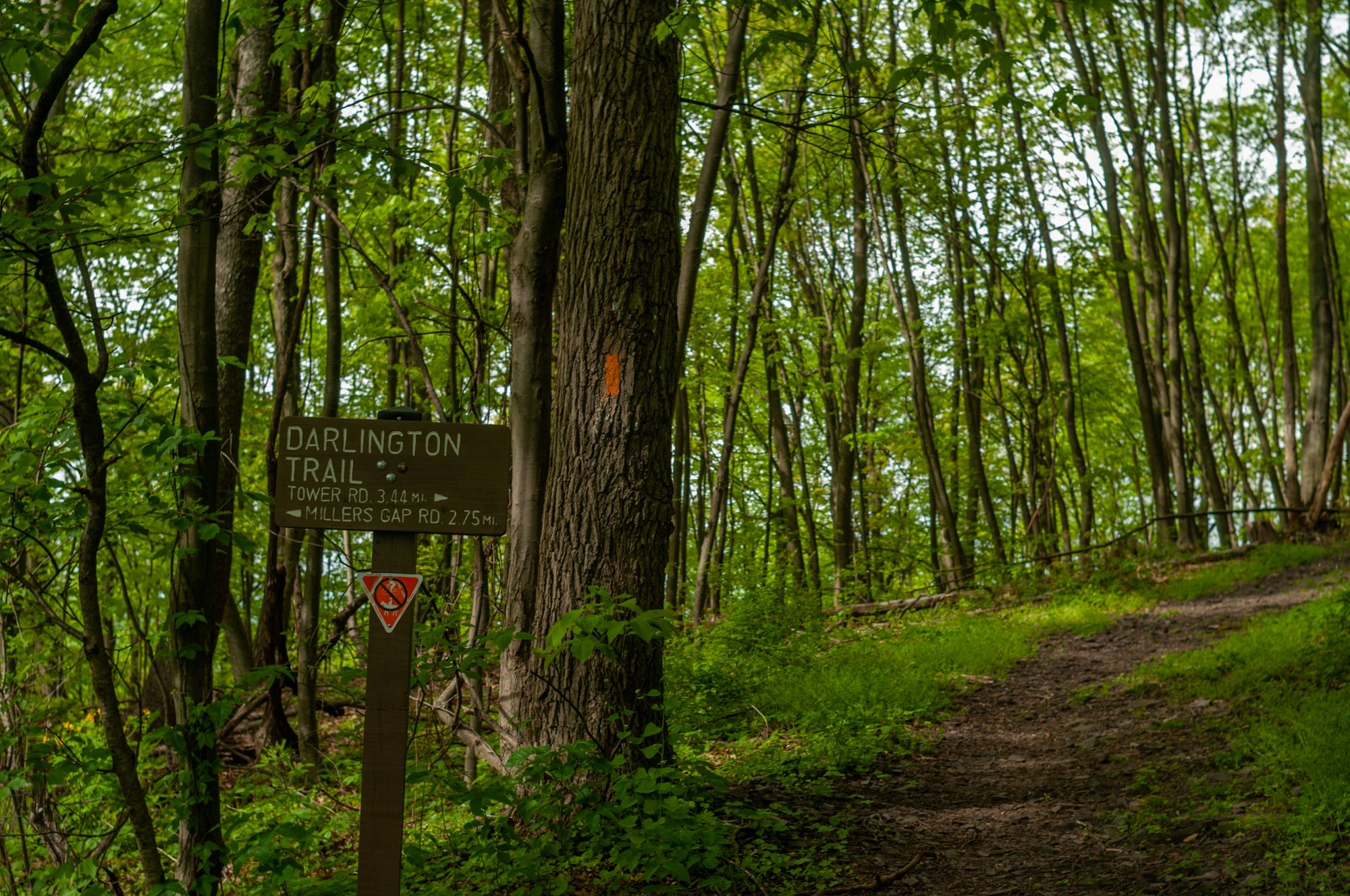
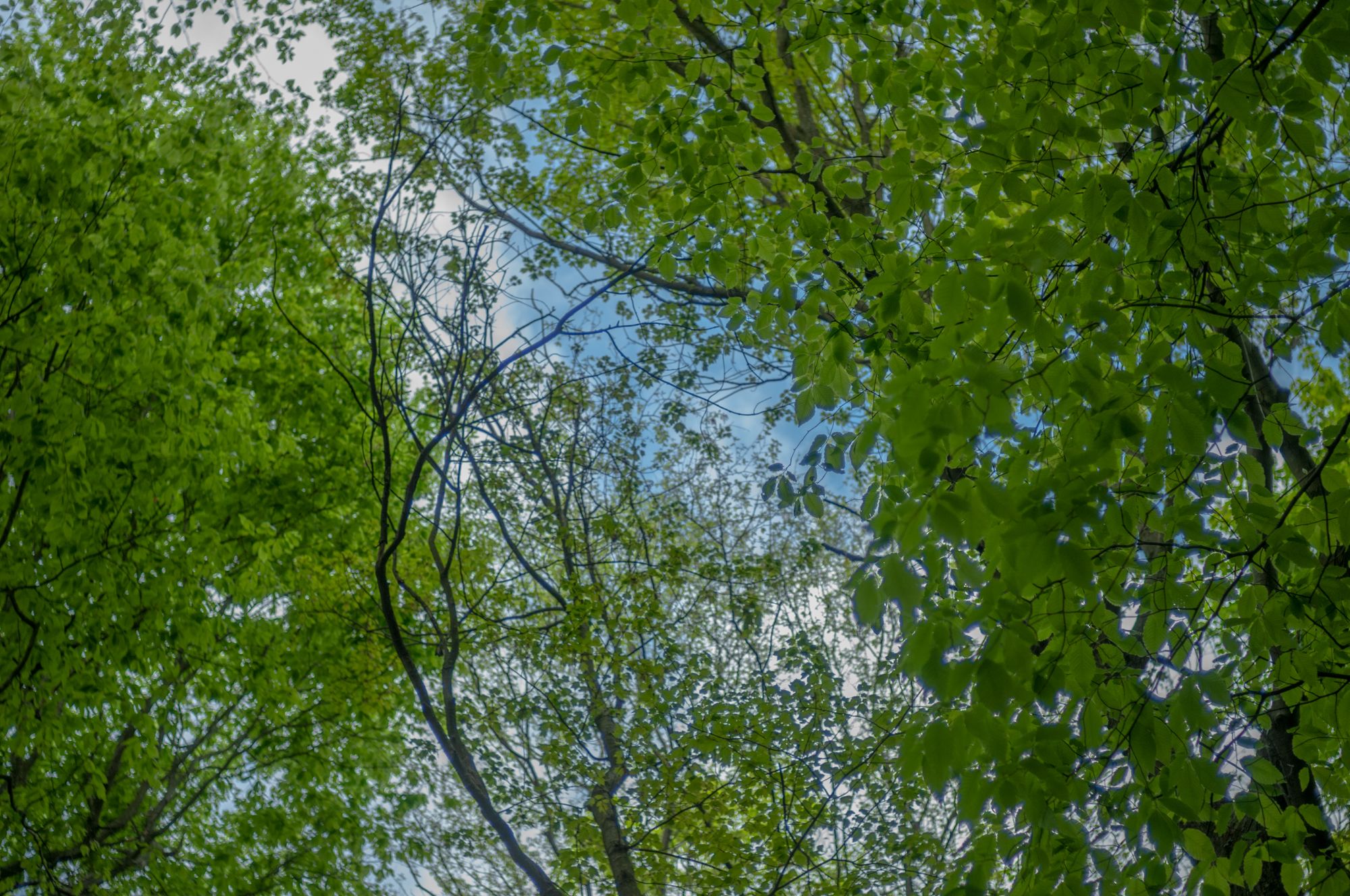
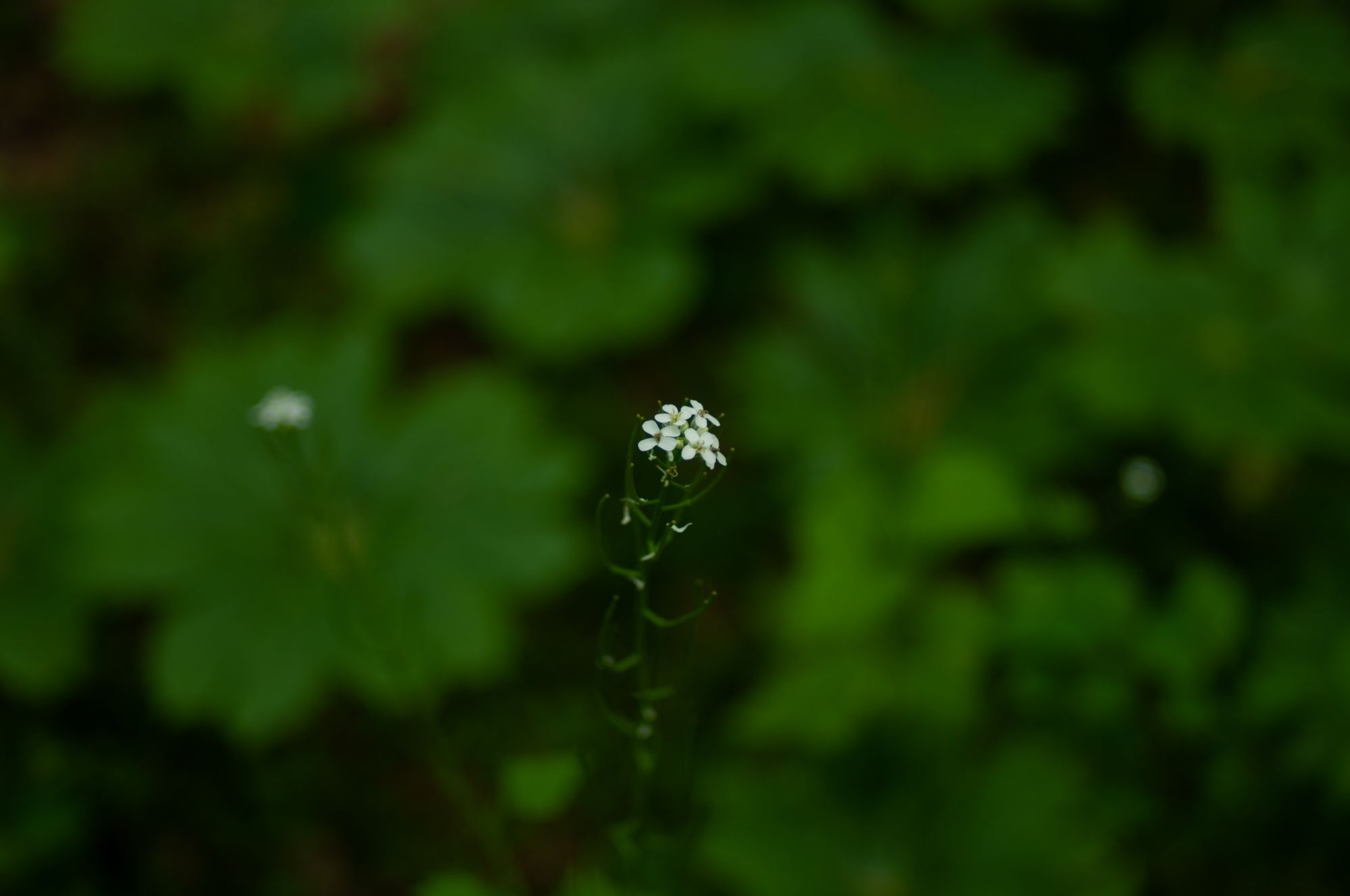


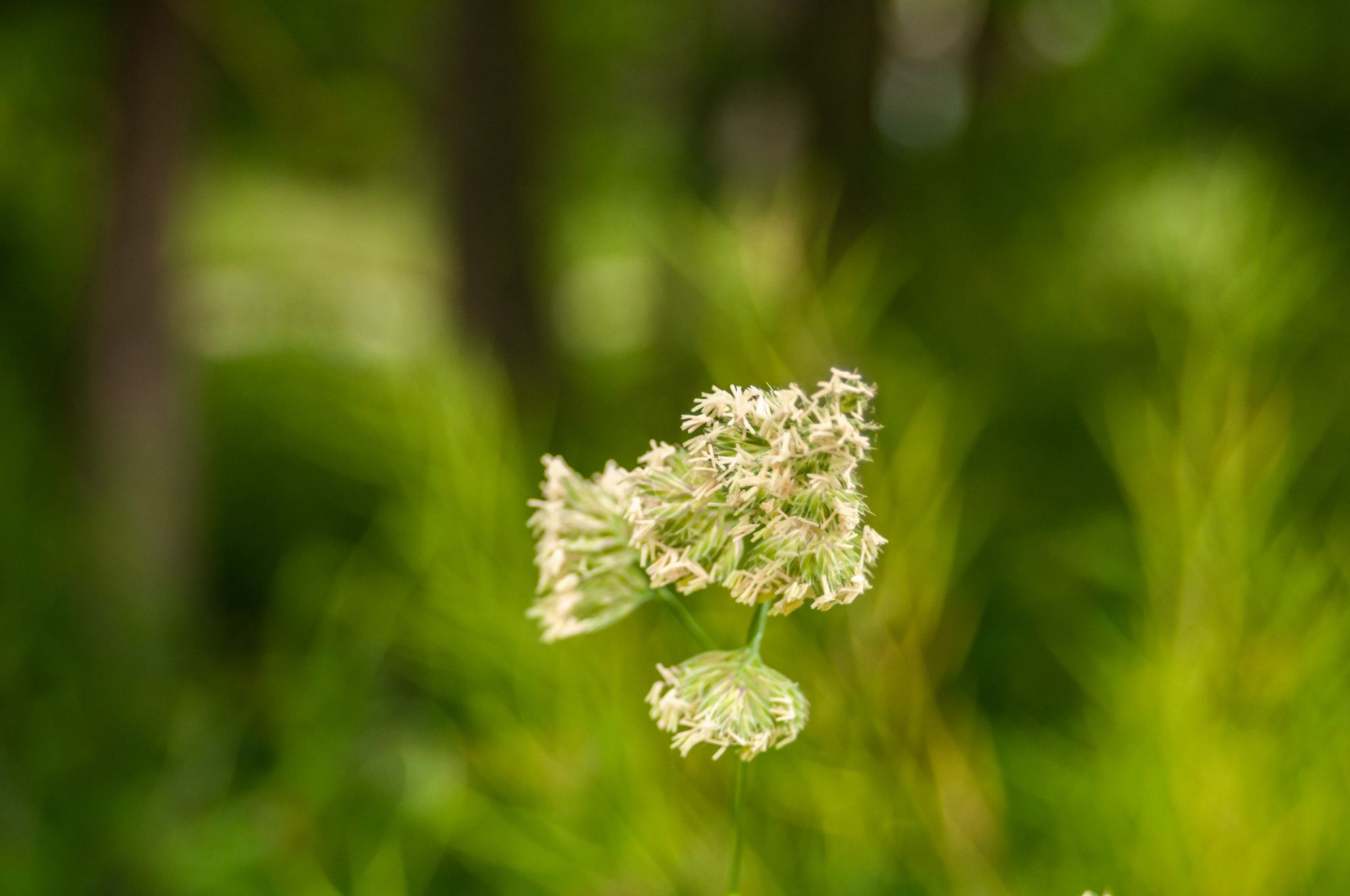
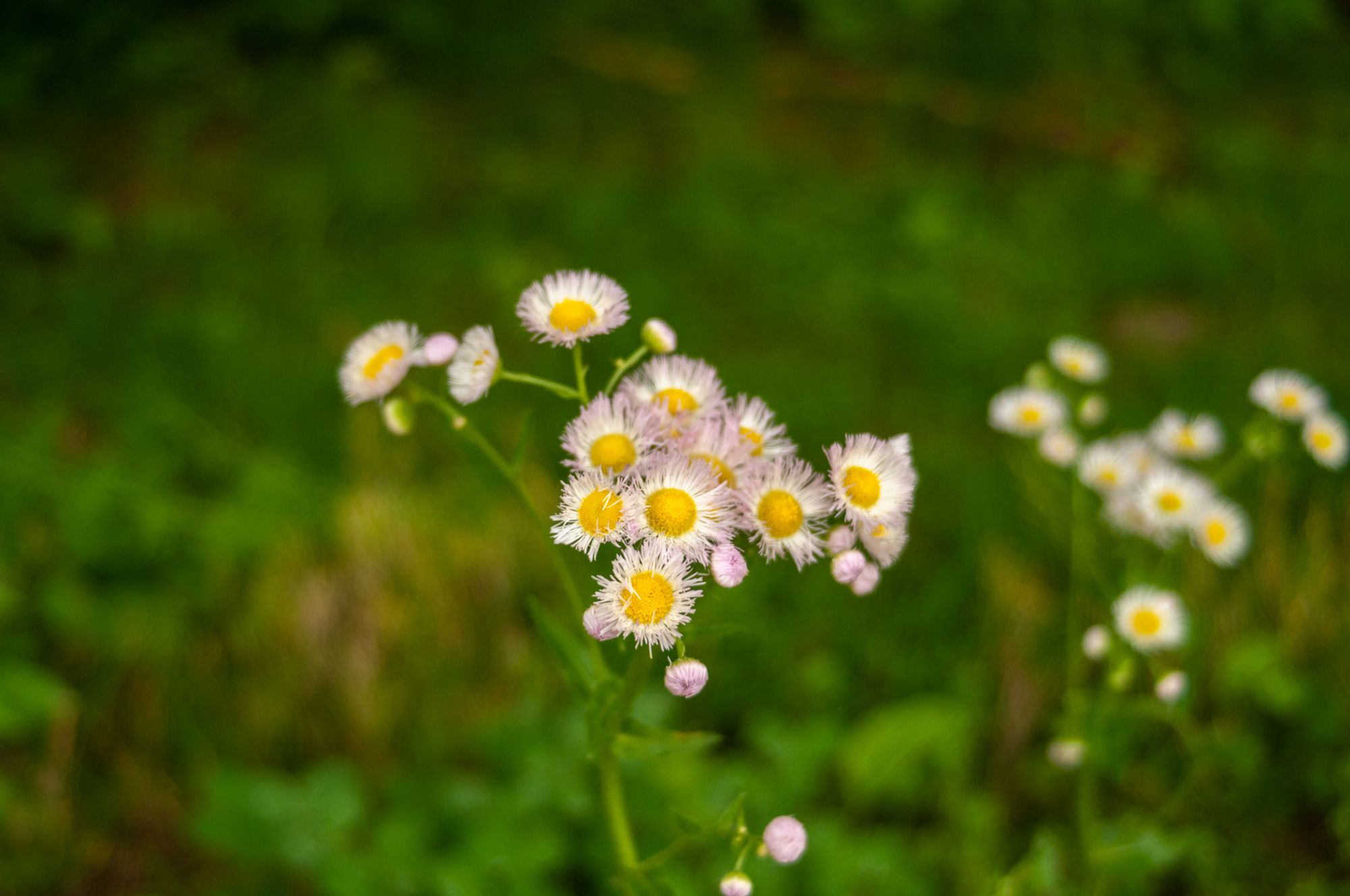

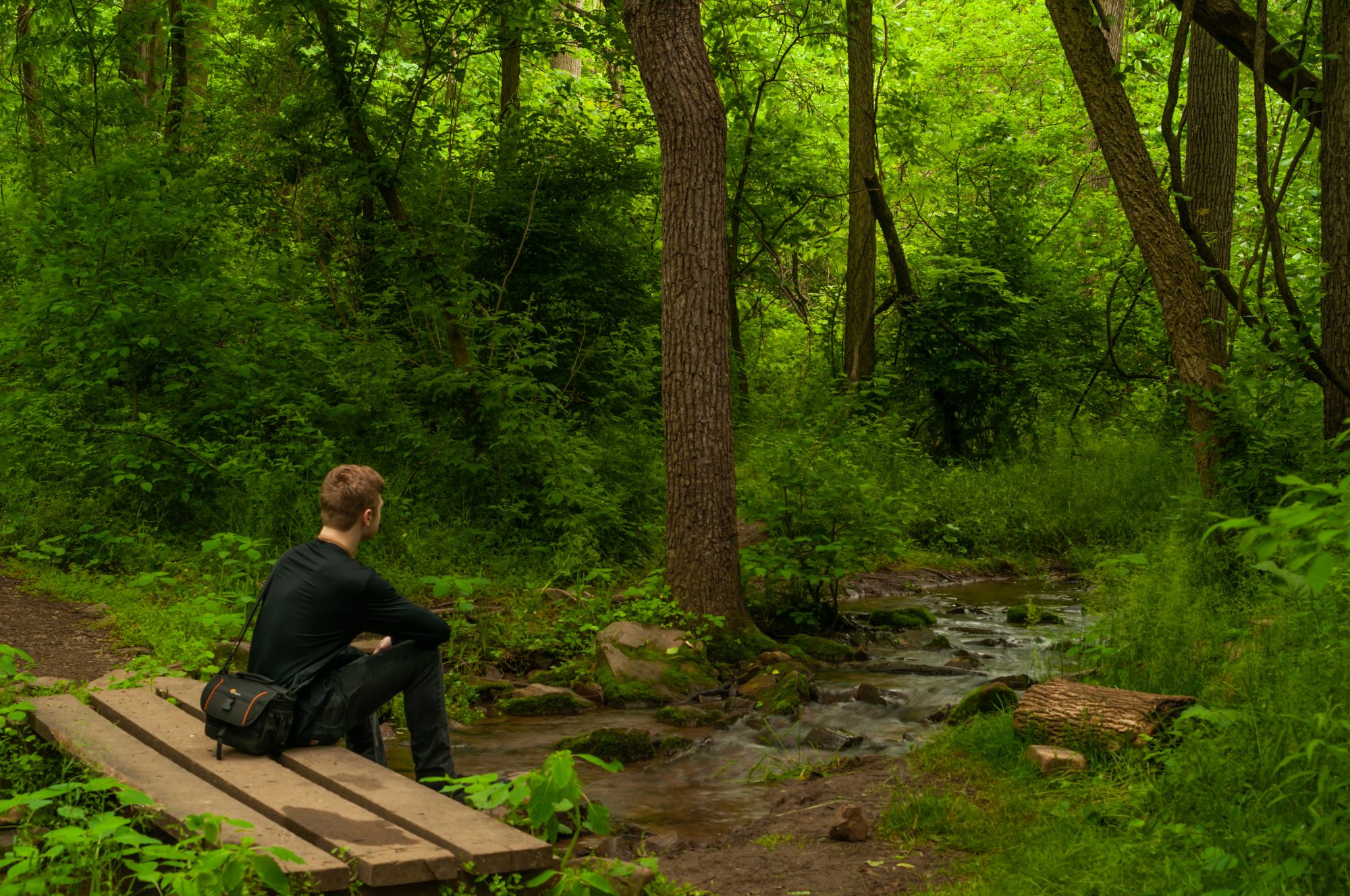
The colors out of this Nikon, even with image processing set to neutral, are crazy. Everything is so full of life and greens and yellows especially look good, though yellows/oranges can start to mix and cause a bit of tonal issues like you see on my skin in the last photo, or some of the tree bark in the other photos. Most of these are unedited, some have exposure adjustment, but none have color adjustments. No complaints here.
Limitations
Ok, yeah, the camera has limits. Most of these stem from its lack of ability to boost underexposed shots, or are limits of the 35-70 I reviewed it with. For example, the bokeh of the 35-70 can get really, really messy. I mean, this shot looks like a painting!
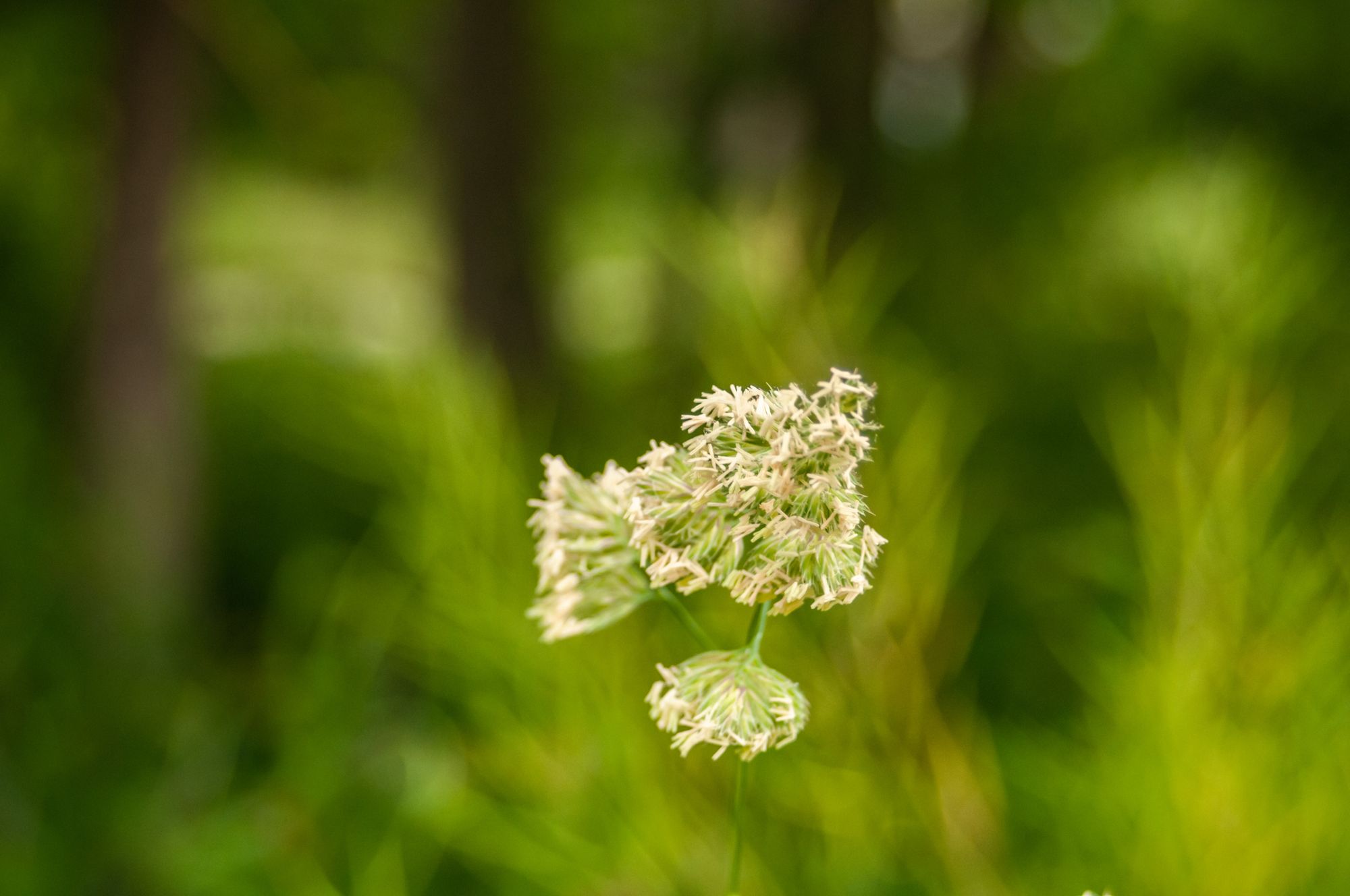
Limitations of this lens aside, this D300s has plenty of room to grow. The sensor itself pulls its own weight well, and Nikon has a lot of awesome DX lenses and some of them can be had for very, very cheap on the used market. Even if you want a wild fisheye, the 10.5mm F/2.8 DX fisheye can be had for about $200 or sometimes less, and is fully compatible with the D300s, including autofocus, and performs very well. Things like the 35 F/1.8 AF-S DX also work wonderfully and can be had for about $125. You have a lot of room to grow with this camera and you have a lot of lenses to choose from, considering you can even use classic AI and early AF lenses.
Now, I'd be lying if I said the 12 MP D300s could take all the same images my 30 MP EOS R can. There are certain shots where I will want extra fidelity on some small text and it simply isn't possible with the D300s, for example zooming in on the hood emblem in this shot.

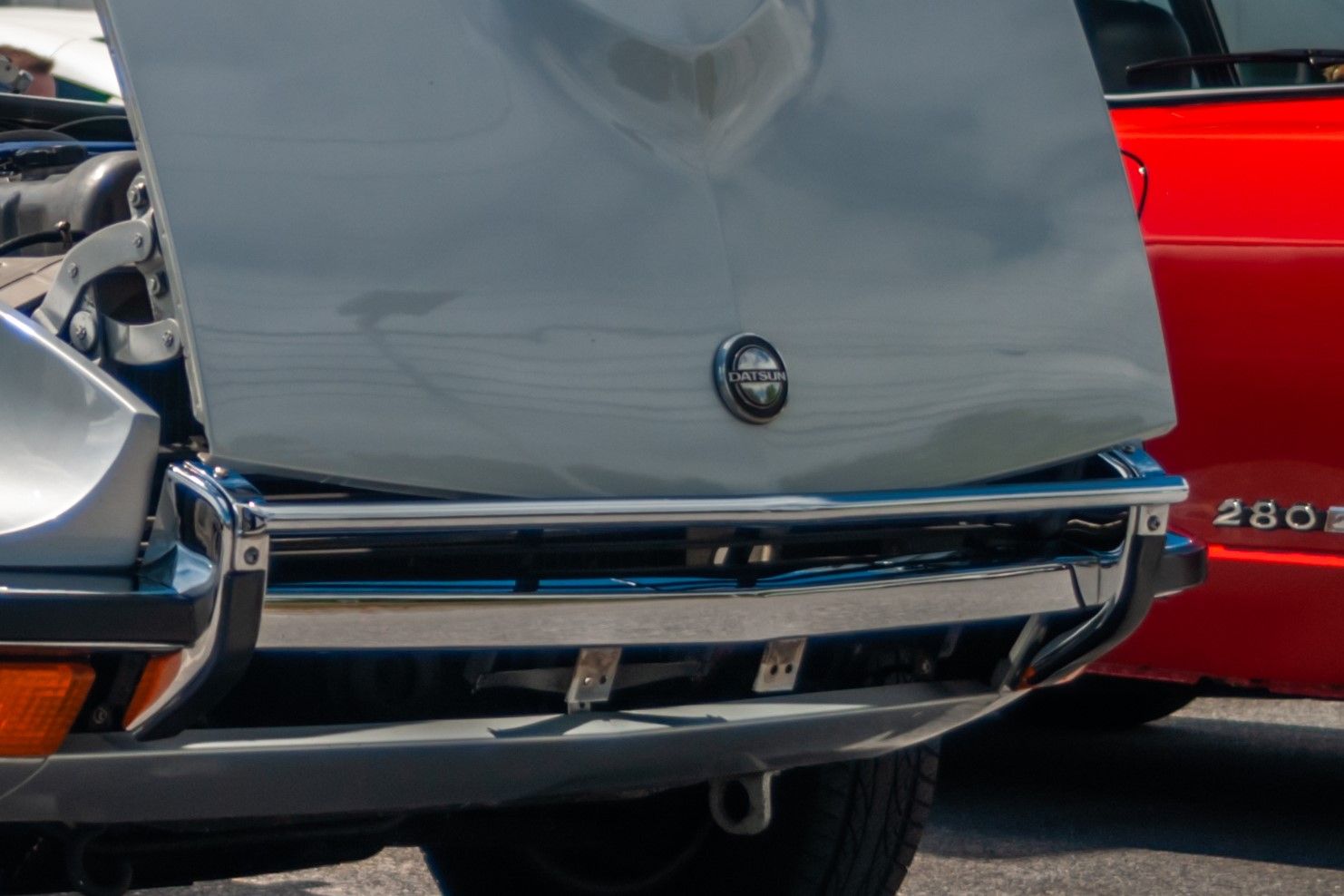
The "Datsun" letters are totally legible, for sure, but not nearly as sharp as you can get from more pixels (and a better lens, to be fair). This seems like a bit of a nitpick, but this limitation does transfer to more realistic scenarios as well, this was just the best example I have for this review. That said, this is plenty sharp for almost all photography.
And of course, the biggest limitation of this camera in my opinion is the underexposure performance I mentioned before. Once I learned how to best use the camera, it wasn't a huge issue, and the ability to use slower shutter speeds due to weight did help a lot, but the limitation is still there. You have very little ability to underexpose in a very contrast heavy scene, and little ability to boost your shadows without them looking soft and lacking clarity.
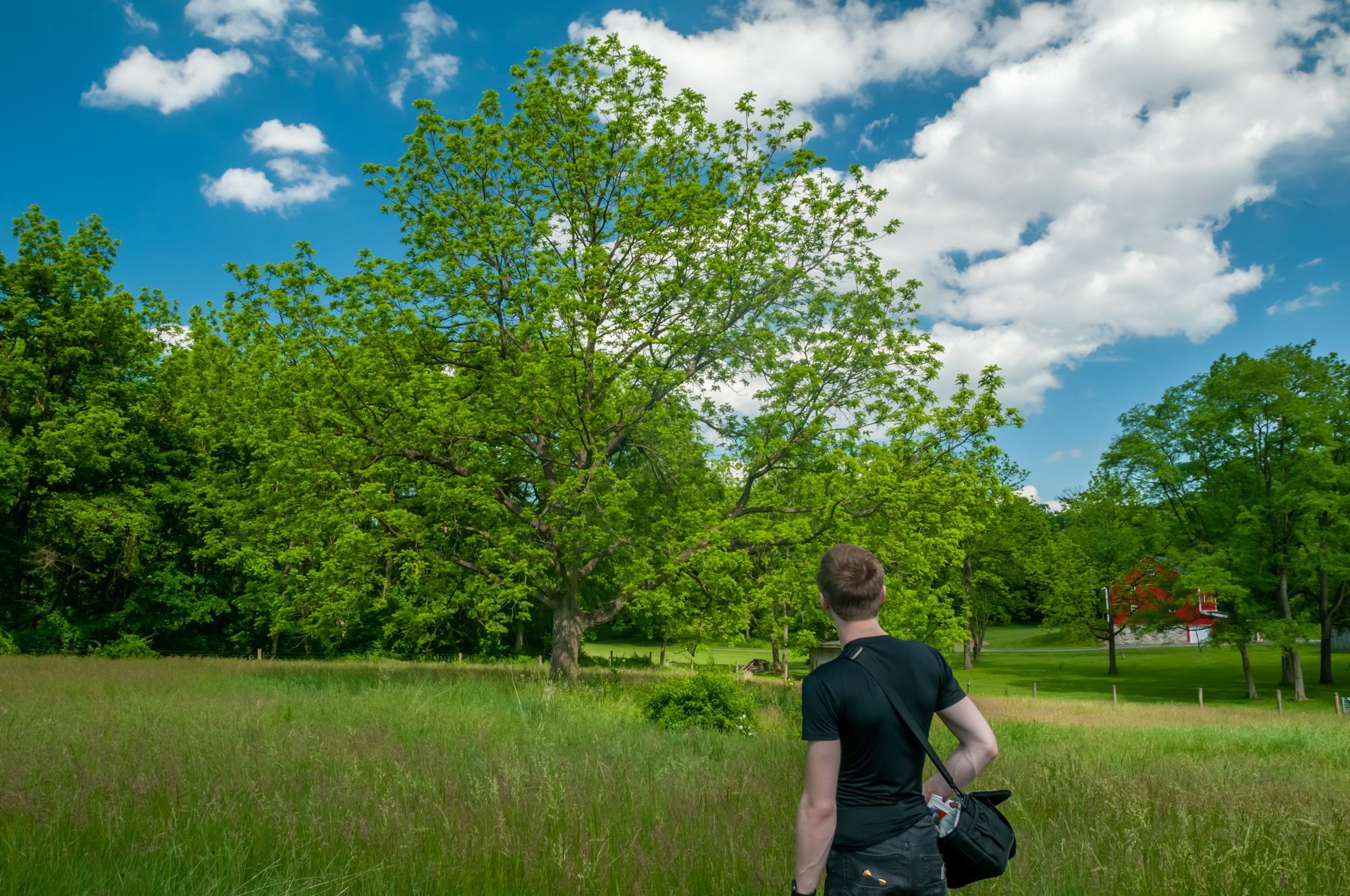
So, this image looks mostly fine, right? Well, look at the color of my black shirt, it's very green, and the color/brightness of my skin is very inconsistent. This is the lack of tonal/contrast clarity at its...well, not worst, but close to it. This shot was mildly underexposed (about 2/3 stop I think) and then boosted in post.
THIS shot though, definitely the worst of the contrast and tonal haziness.

Once again, it looks mostly fine at first, but do you notice that the overall contrast is really weird, compared to all the other shots you've seen? And the colors are just off in general. And now let's zooooom in.
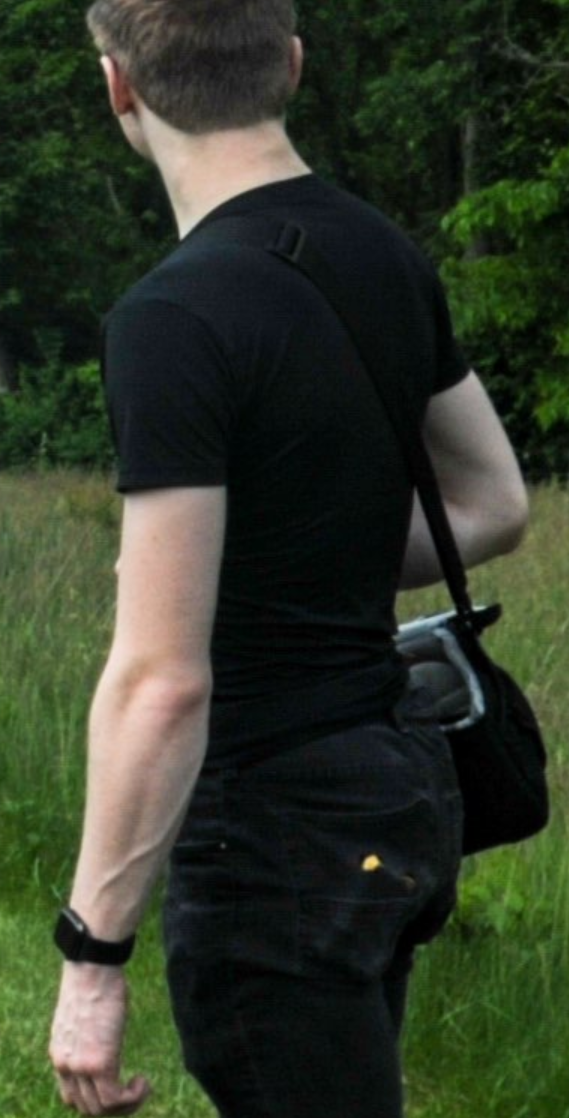
Here you can clearly see how inconsistent the colors are on my skin and clothes. It's really, really bad. This is the worst it gets though, I haven't seen it get worse than this in my experience with the camera.
Extreme Examples
Now on to the comparisons with my EOS R. The EOS R is a reasonable professional camera, not too far off the crazy end of the spectrum. That comparison may seem unfair, but trust me it makes sense. I know showing nuanced performance differences between cameras can be extremely difficult, so I've come up with my own method for making them as obvious as possible. The following test shots were taken at 400 ISO, a very reasonable setting for both cameras. Adobe Lightroom color noise reduction set to the standard 25, no luminance noise correction, no sharpening.
All of these shots are taken 1 stop apart, from -3 stops (1/8 the correct amount of light) up to +3 stops (8 times the correct amount of light), then corrected back to ±0. The original ±0 shots had their shadows boosted +100 and highlights reduced -100 in Adobe Lightroom, to highlight the real dynamic range of the cameras. The point of shooting so under exposed is to show the color inconsistencies and noise associated with the darker parts of the shot. This isn't indicative of how your entire shot would look in the real world, but it is indicative of how much you can reasonably boost dark portions of your image, or drag back bright portions of your image, and how those portions will look.
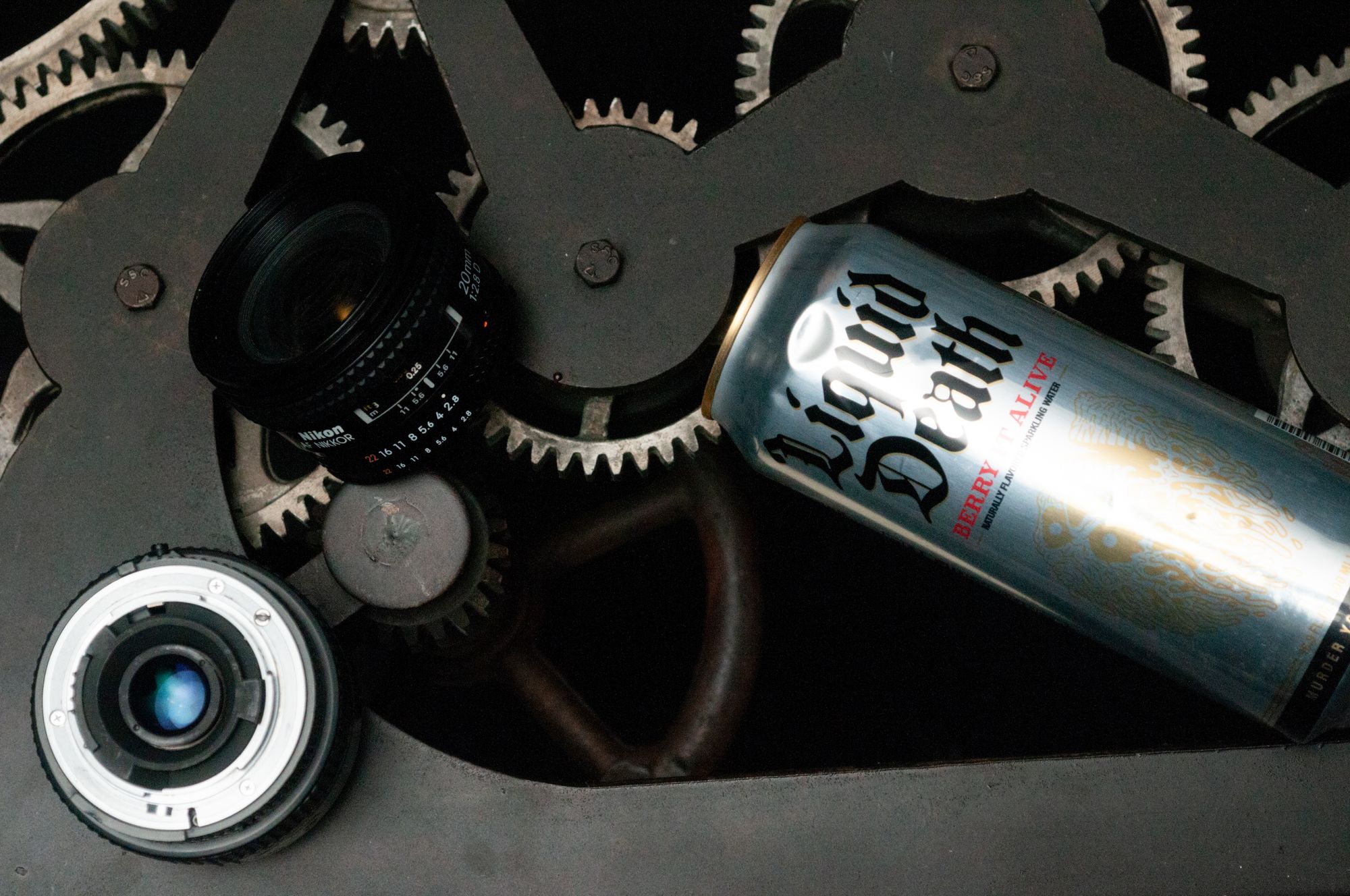
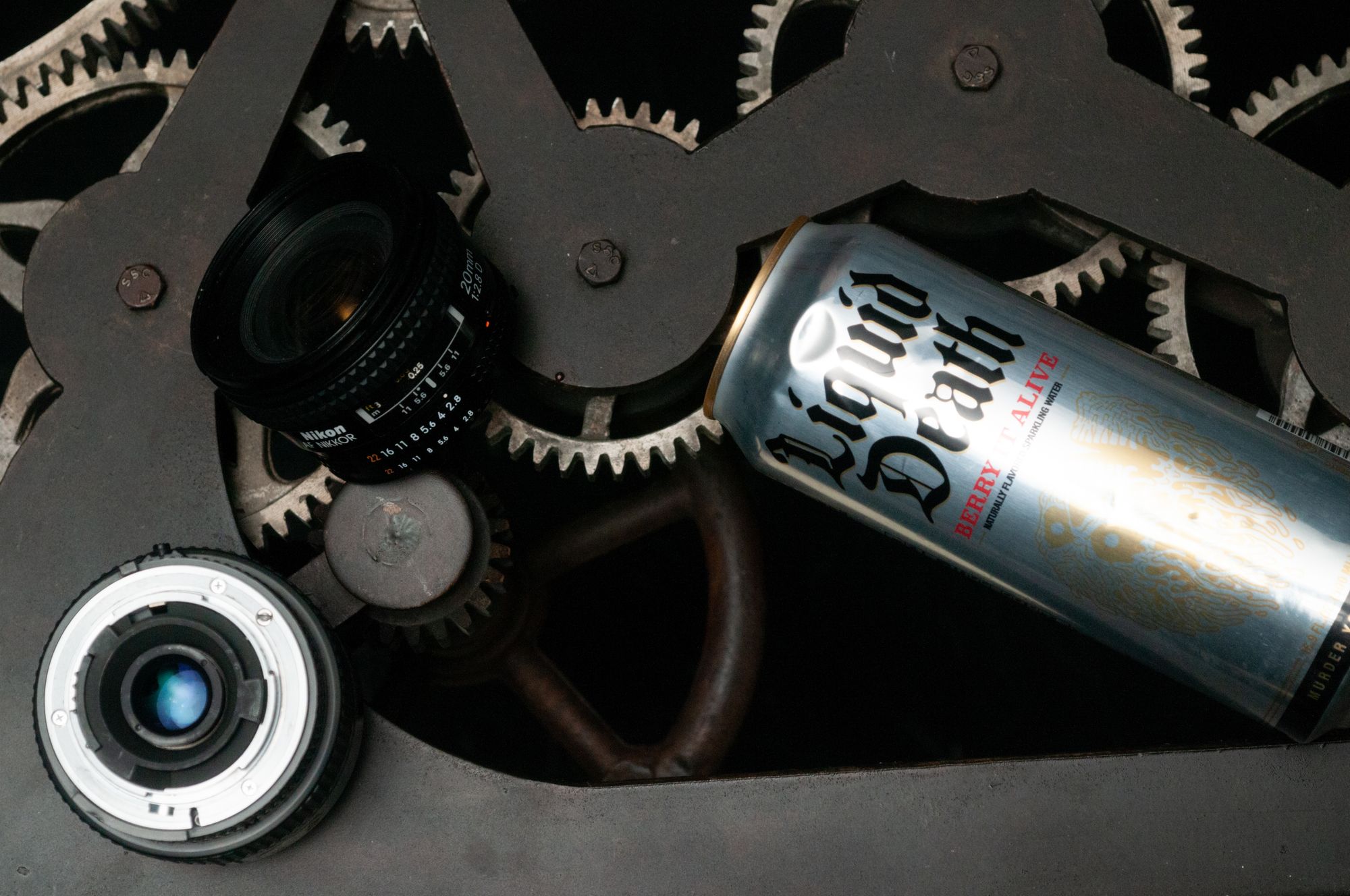
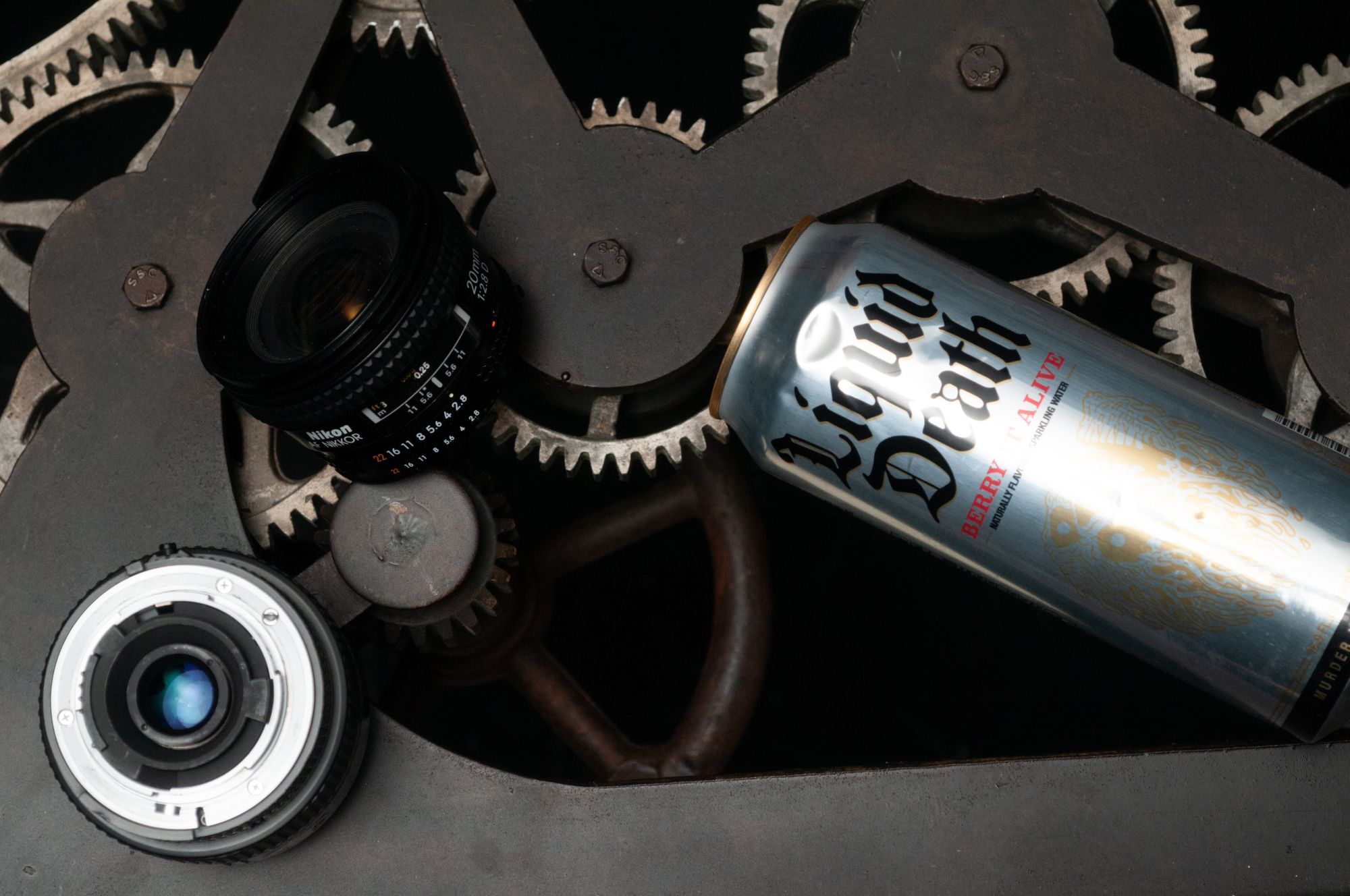
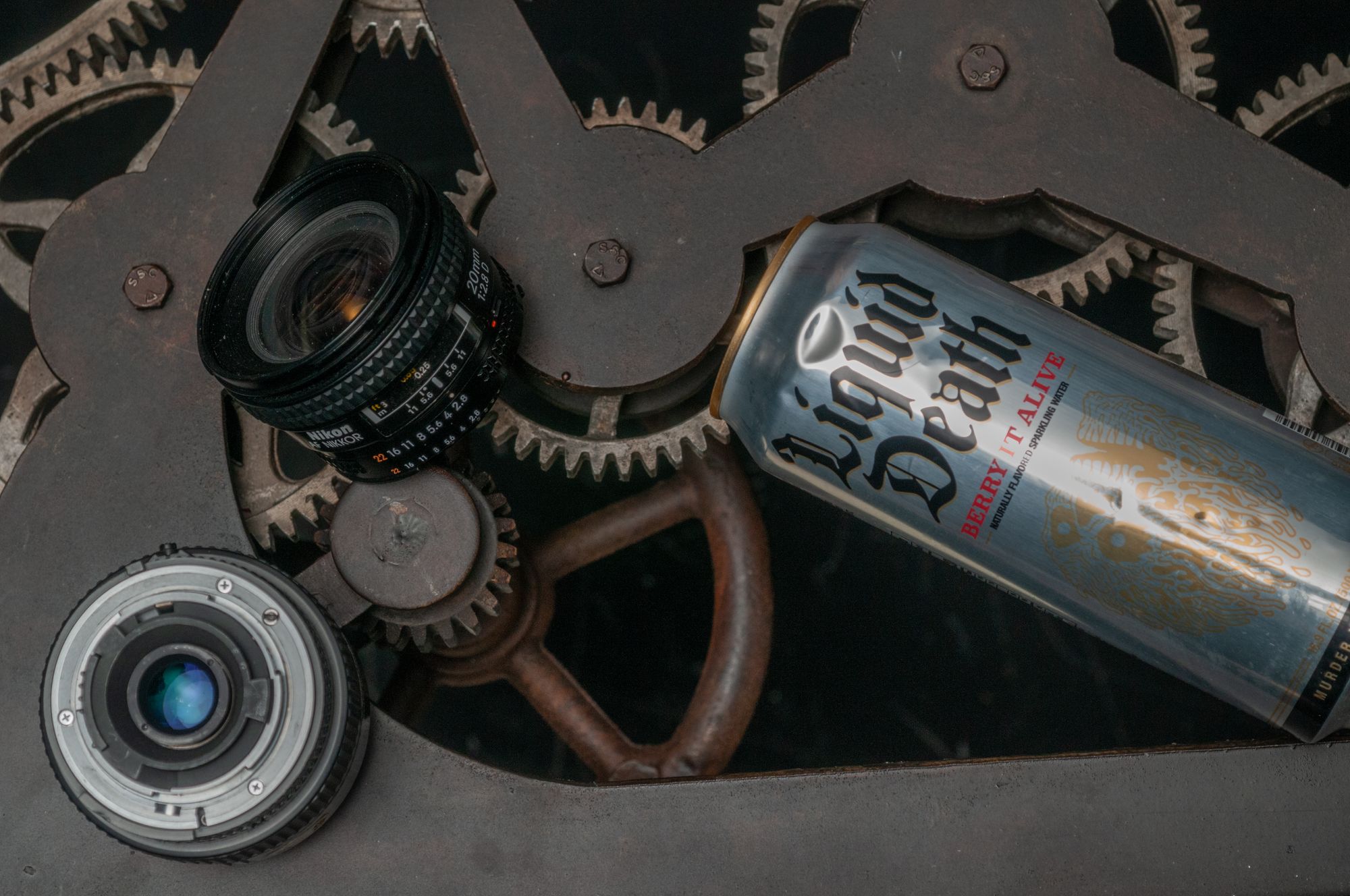
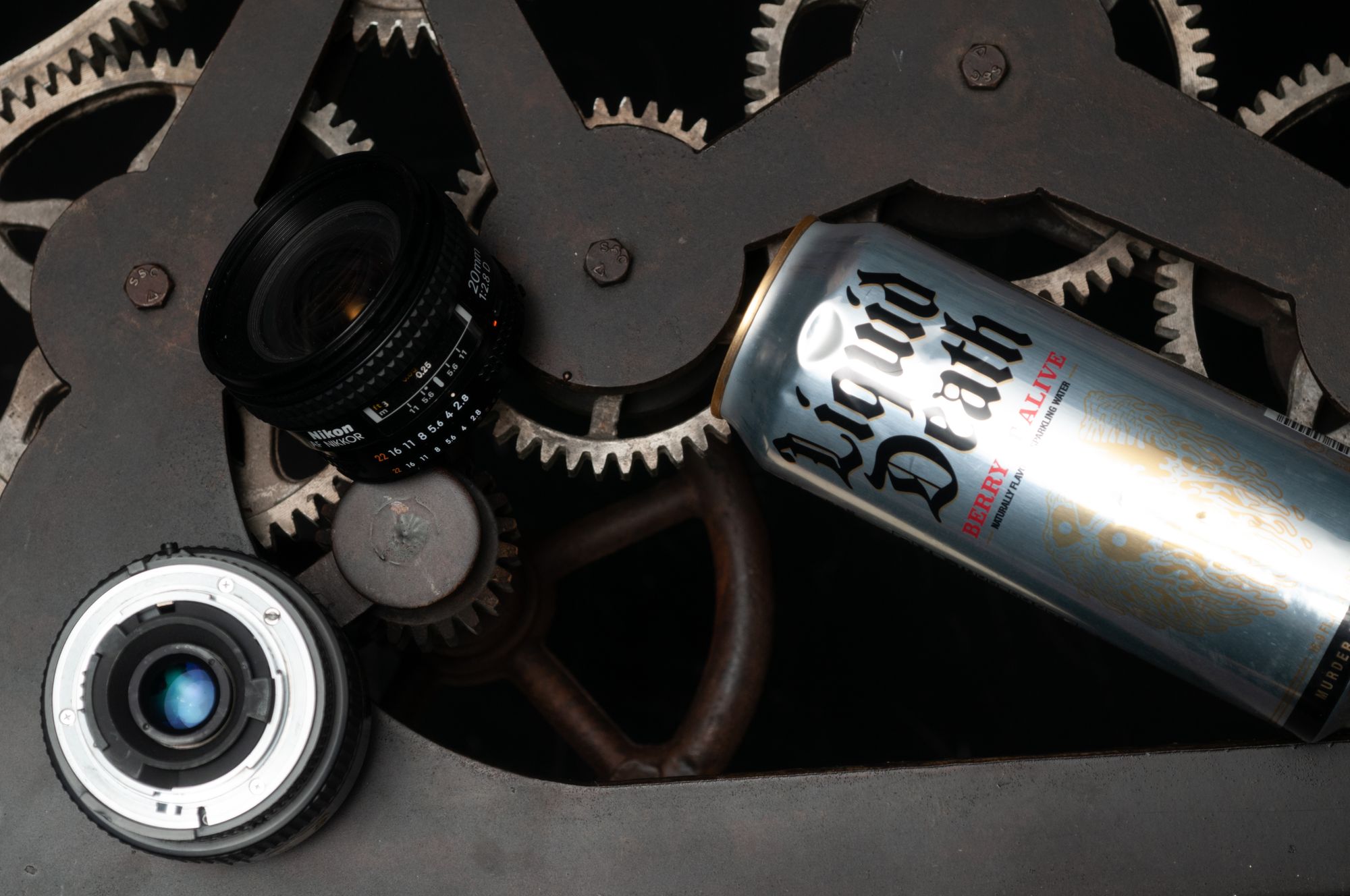
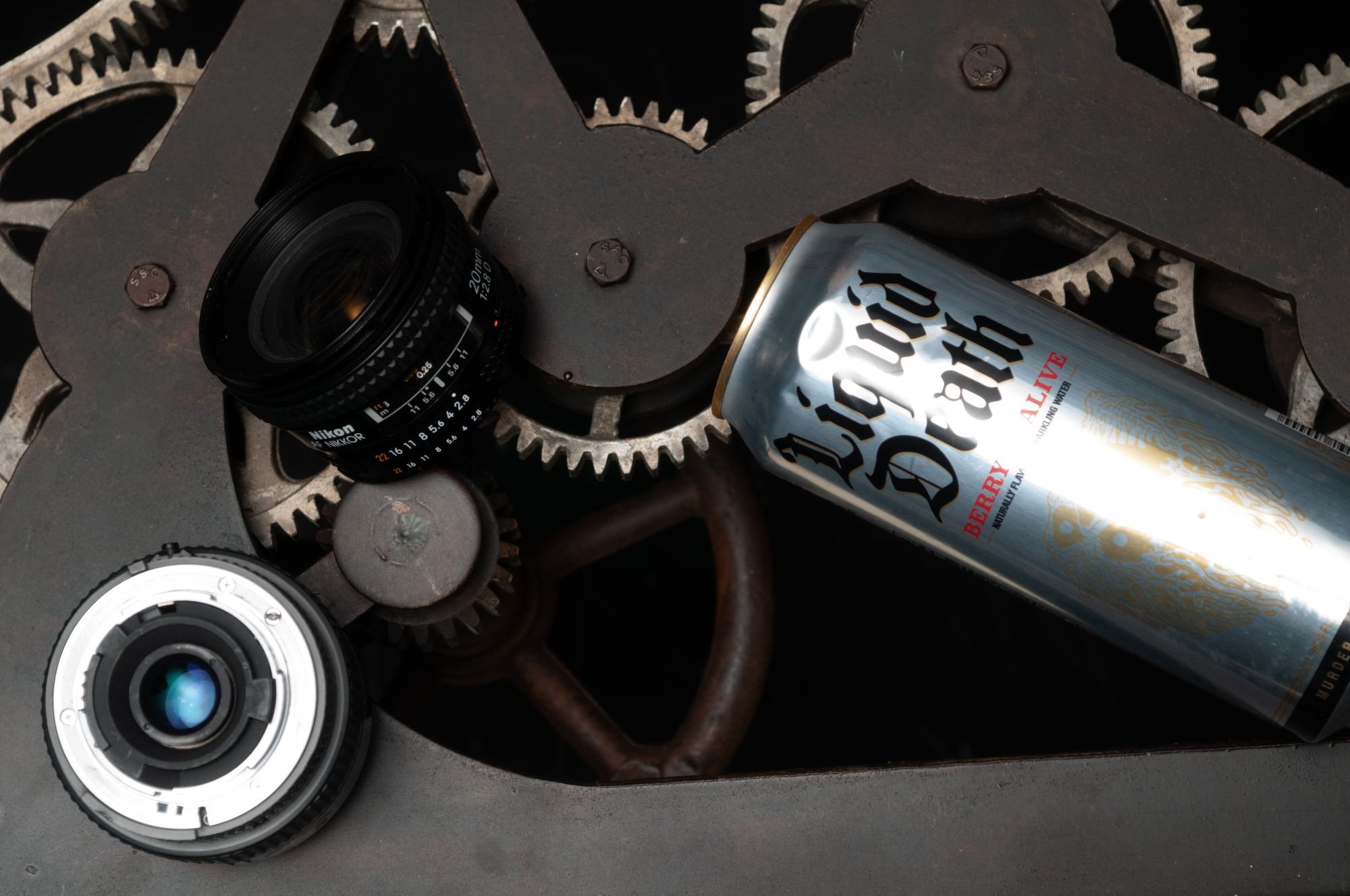
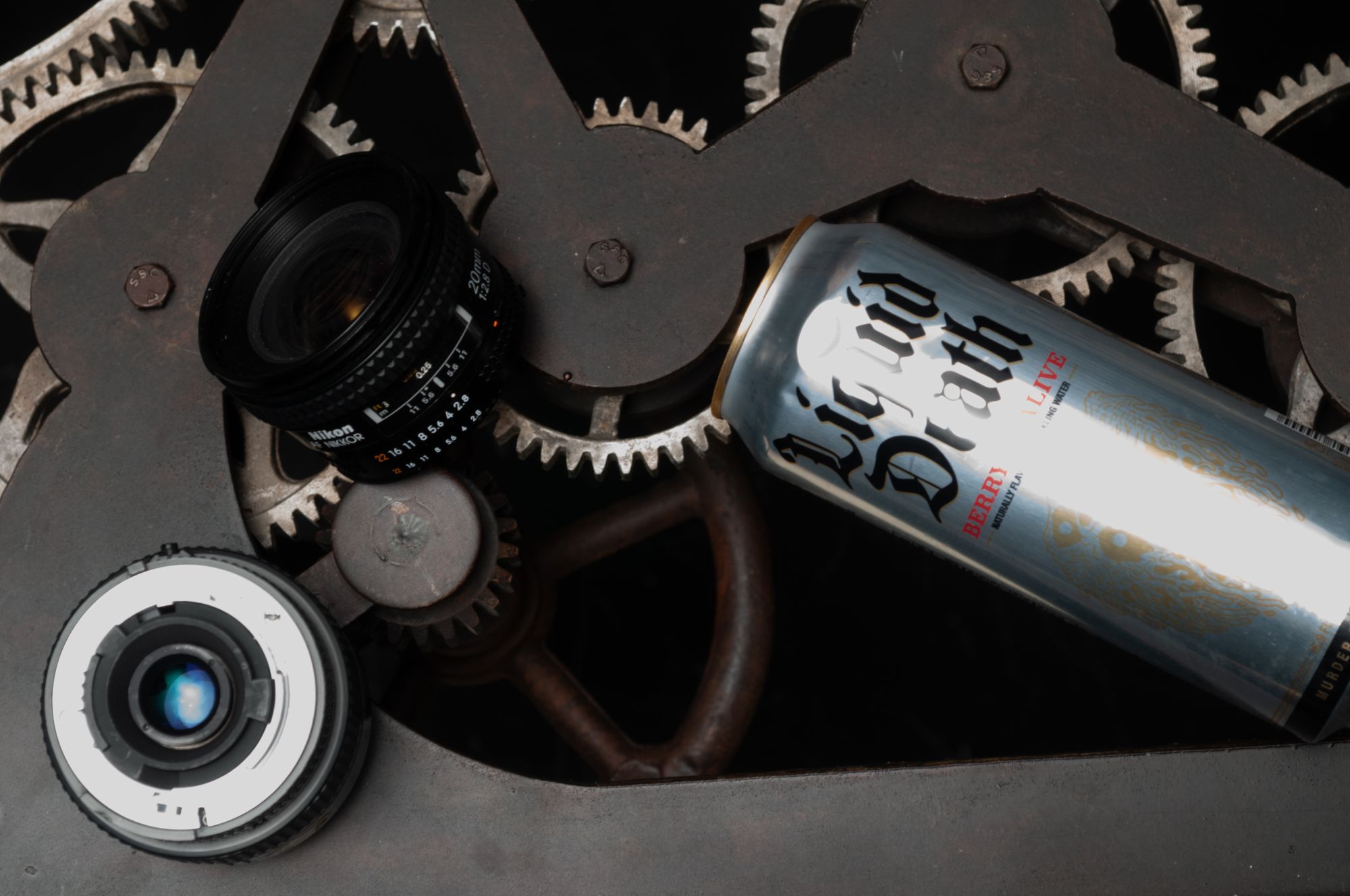
The D300s results.
So starting top left is the -3 stops, -2, -1, then the ±0, then +1, +2, +3. For the underexposed shots, look at the overall colors, and how messy they look, and for the overexposed shots, look at the detail of the bright highlights of the image and the overall dynamic range. The differences can be subtle, but they're very, very telling at -3 and +3. Again, you won't ever take entire photos at -3 or +3, but parts of your image will be under or over exposed by margins like this, and this shows how well you can recover those parts of your image.

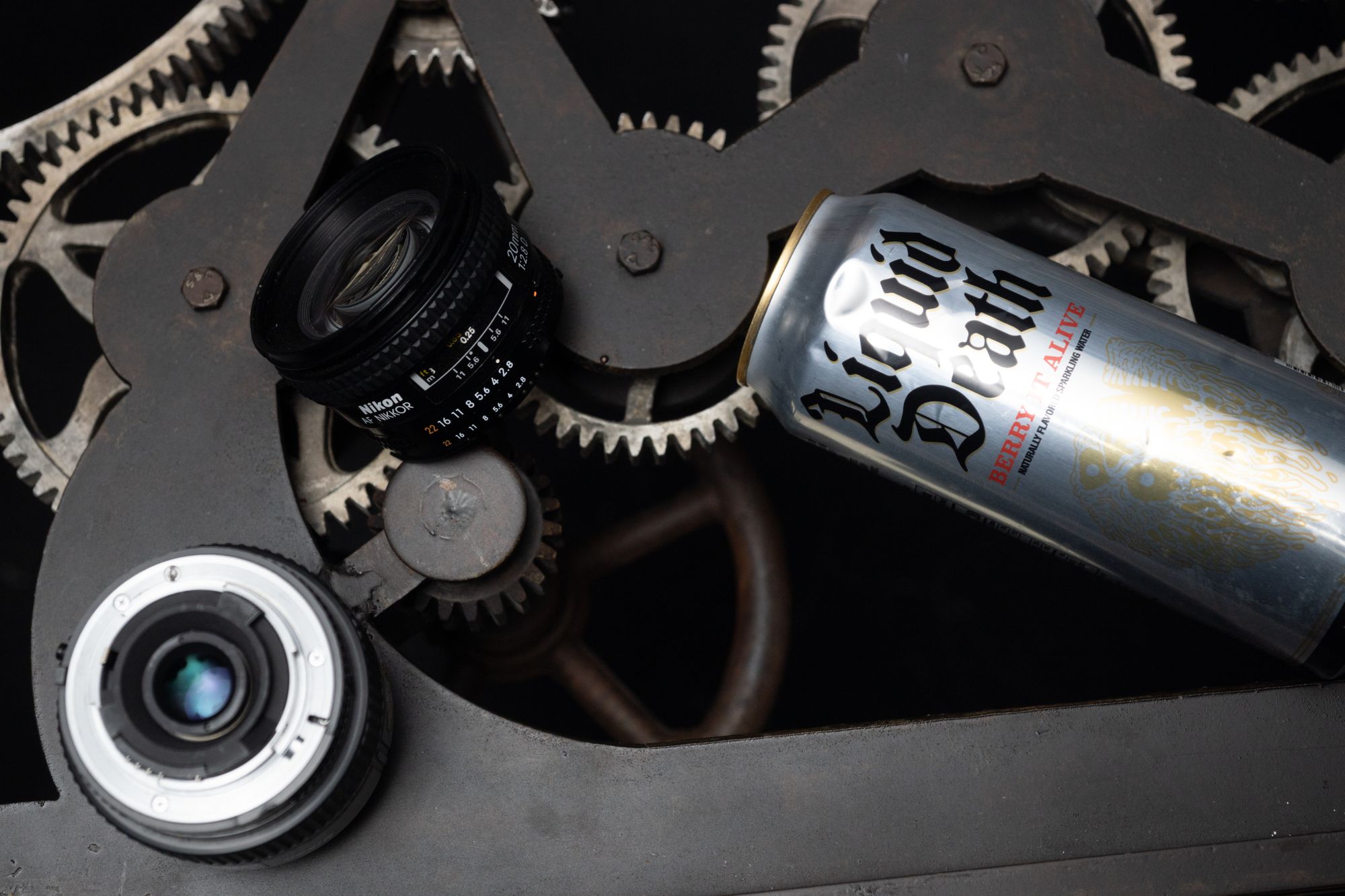
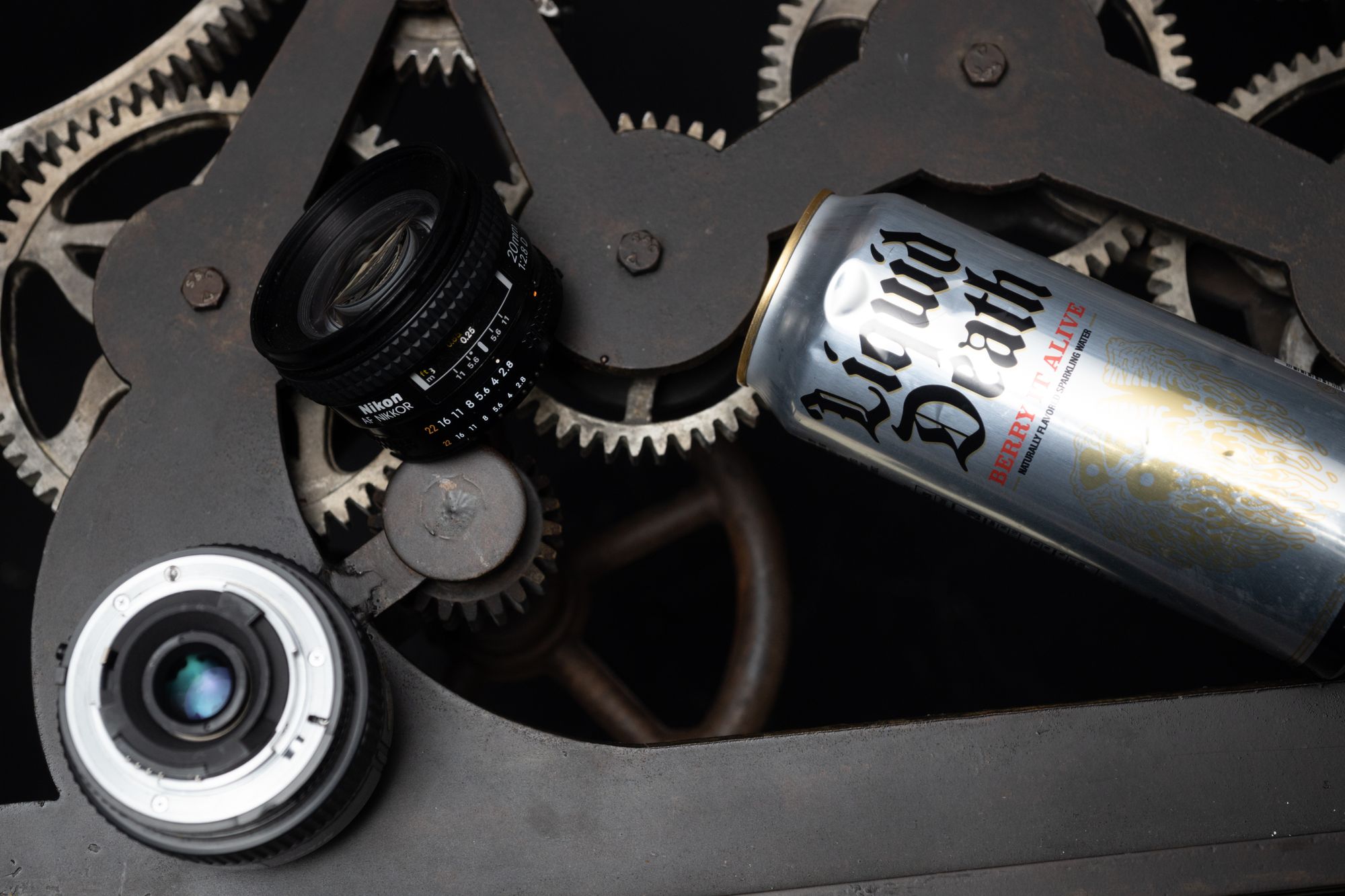
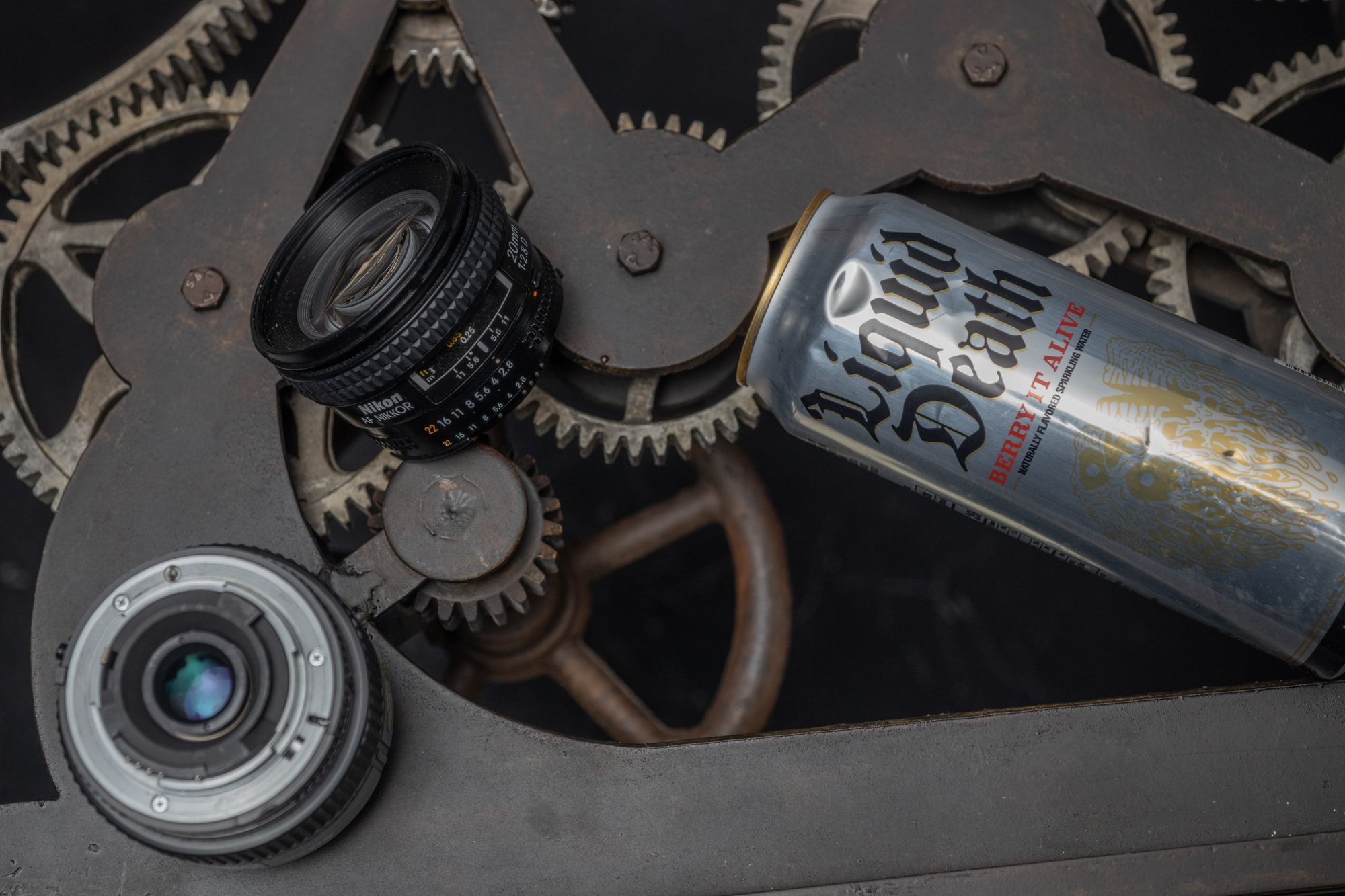



The EOS R results.
Hopefully you can see the differences here. The biggest differences are in the under exposed shots, like here.


EOS R on the left, D300s on the right. -3 stop results.
My Canons have always been good at boosting underexposed images without compromising color, it just seems to be something they're good at, but here you can really see the drastic difference between the abilities of the two cameras. The colors are absolutely obliterated with a green and magenta tint on the D300s.

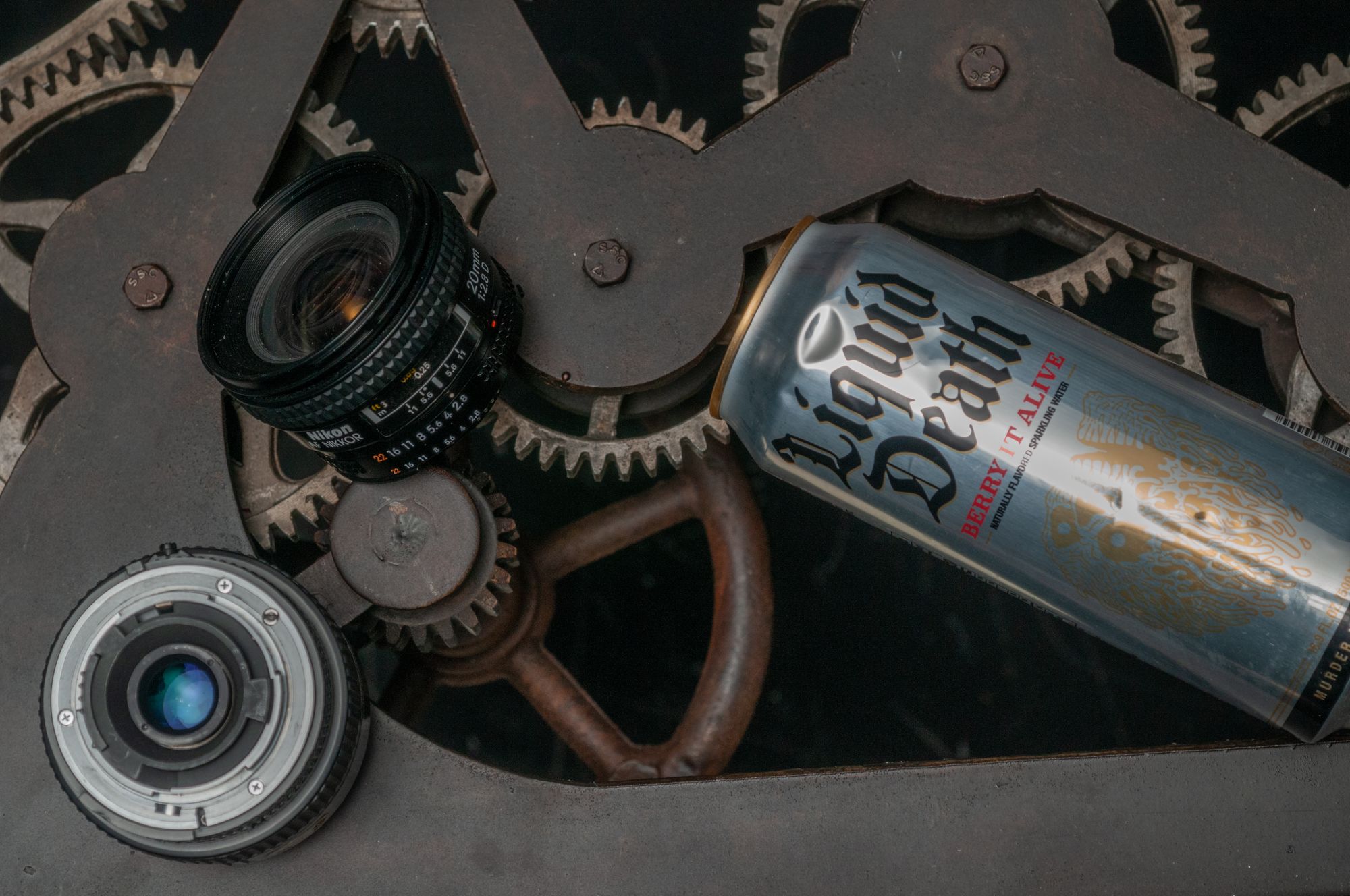
EOS R on the left, D300s on the right.
Here, in the boosted shadows and reduced highlights shots, you can see how those differences can affect an edited image. You can see the dark portions of the D300s shot, like the focus ring and the 20mm lens in general, go green.
Sharpness and Noise
Alright, last section, I promise. To keep it quick and concise, these shots are 100 ISO, 200, 400, 800, 1600, and 3200 on the D300s and the EOS R. Taken with my 55mm F/2.8 AI-s macro at F/5.6, the limitations of both cameras are their sensors, not the lens. Top left starts 100. These are crops from the general center of this image:
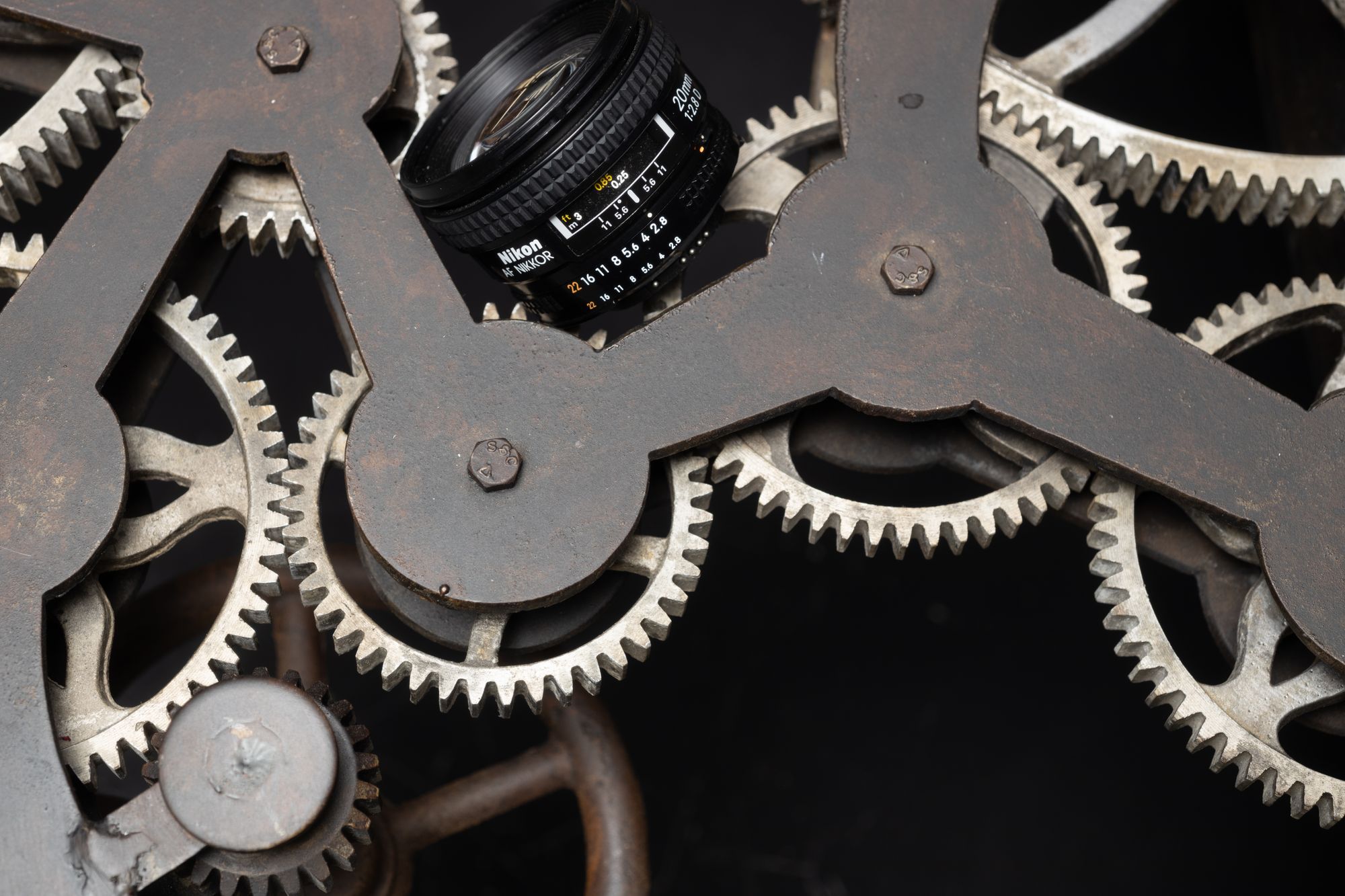
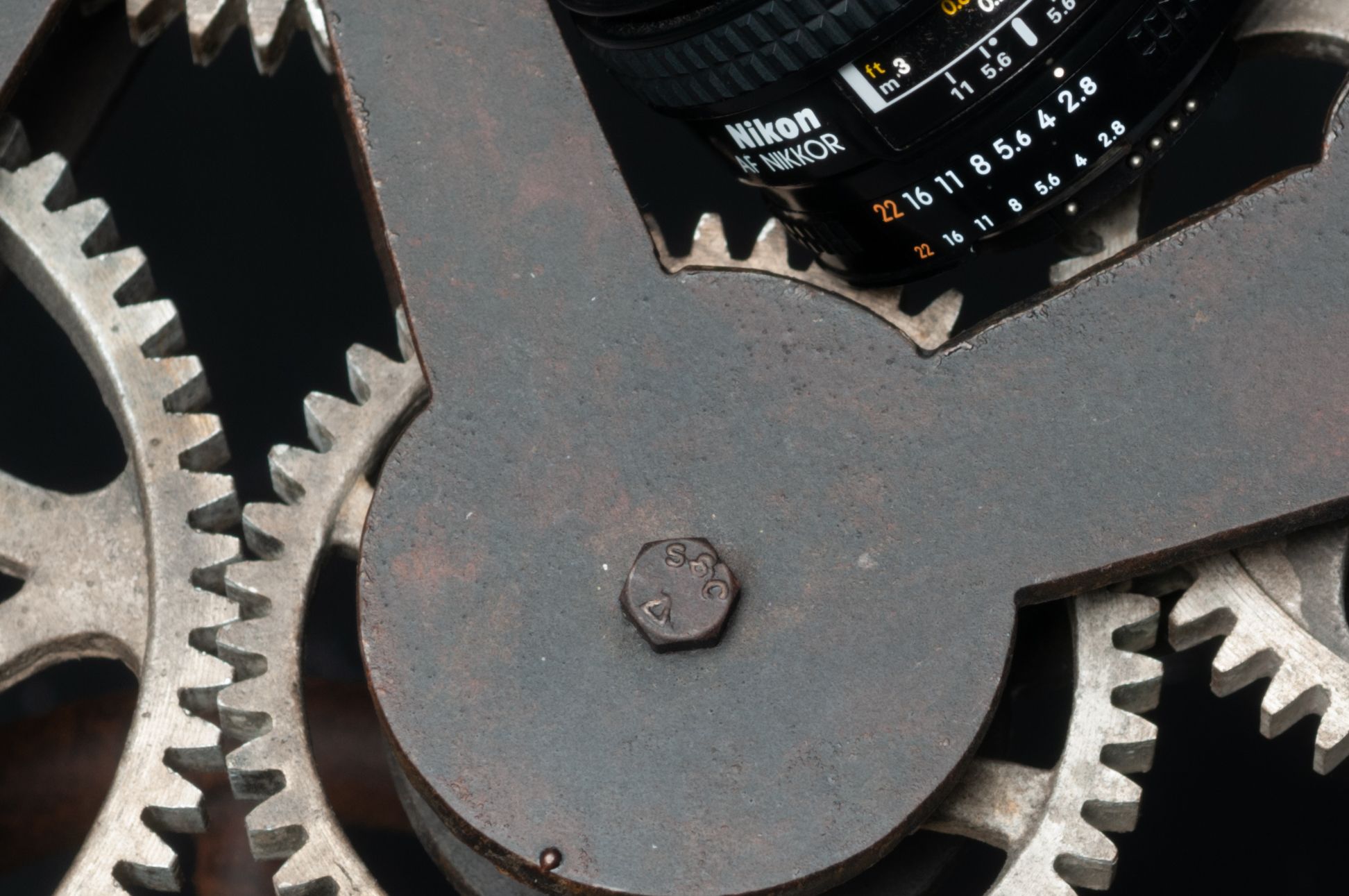
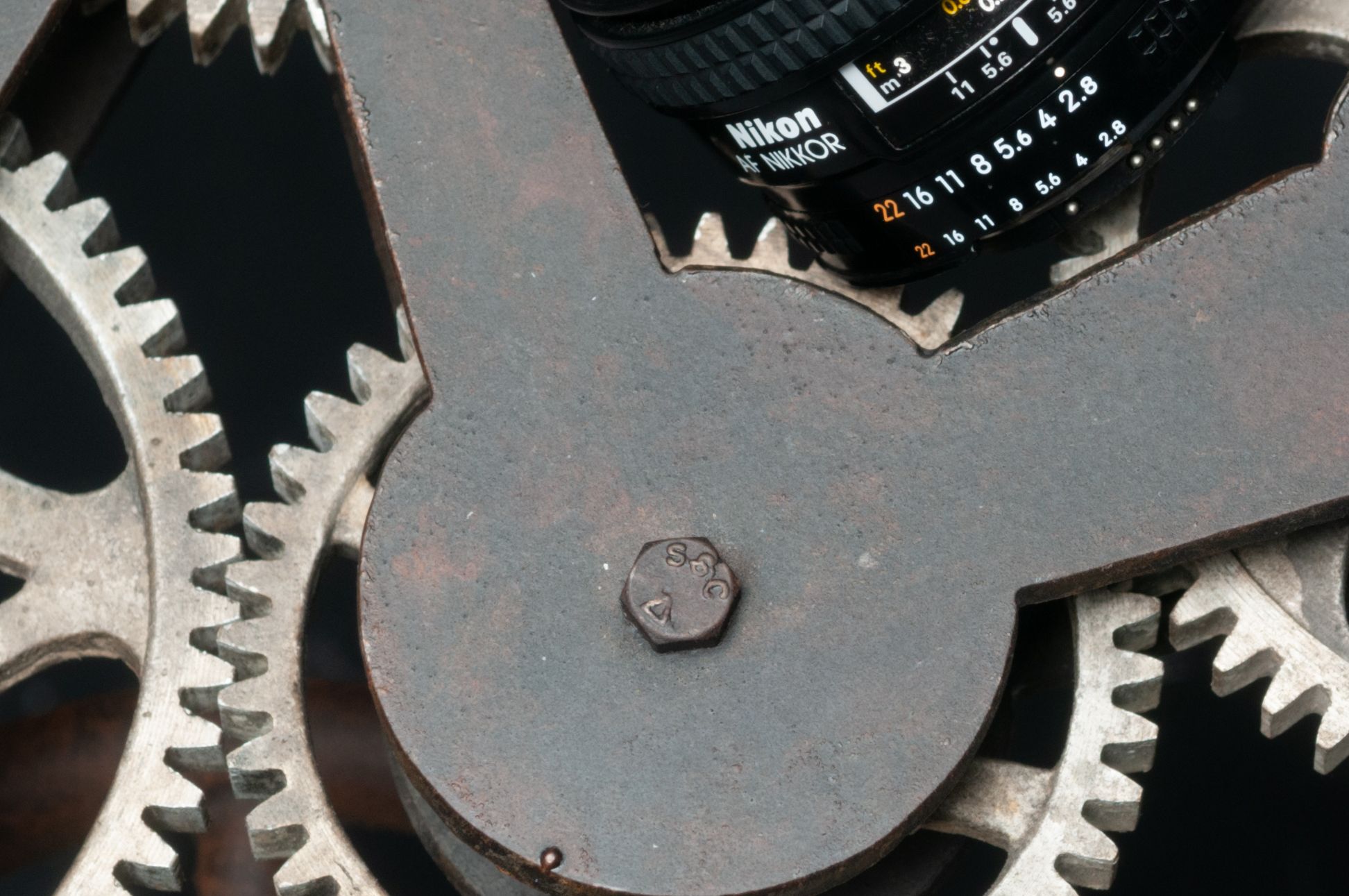


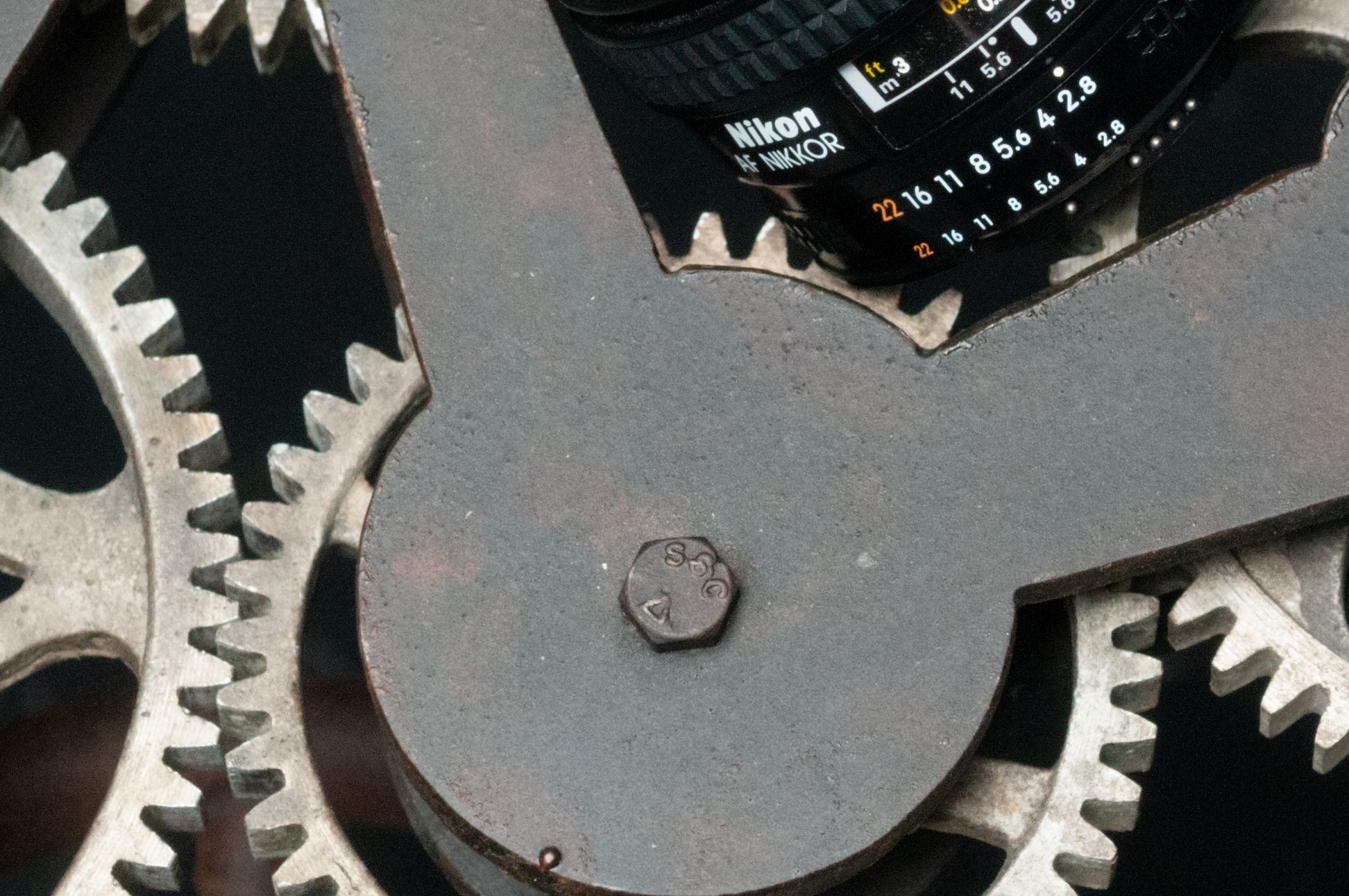
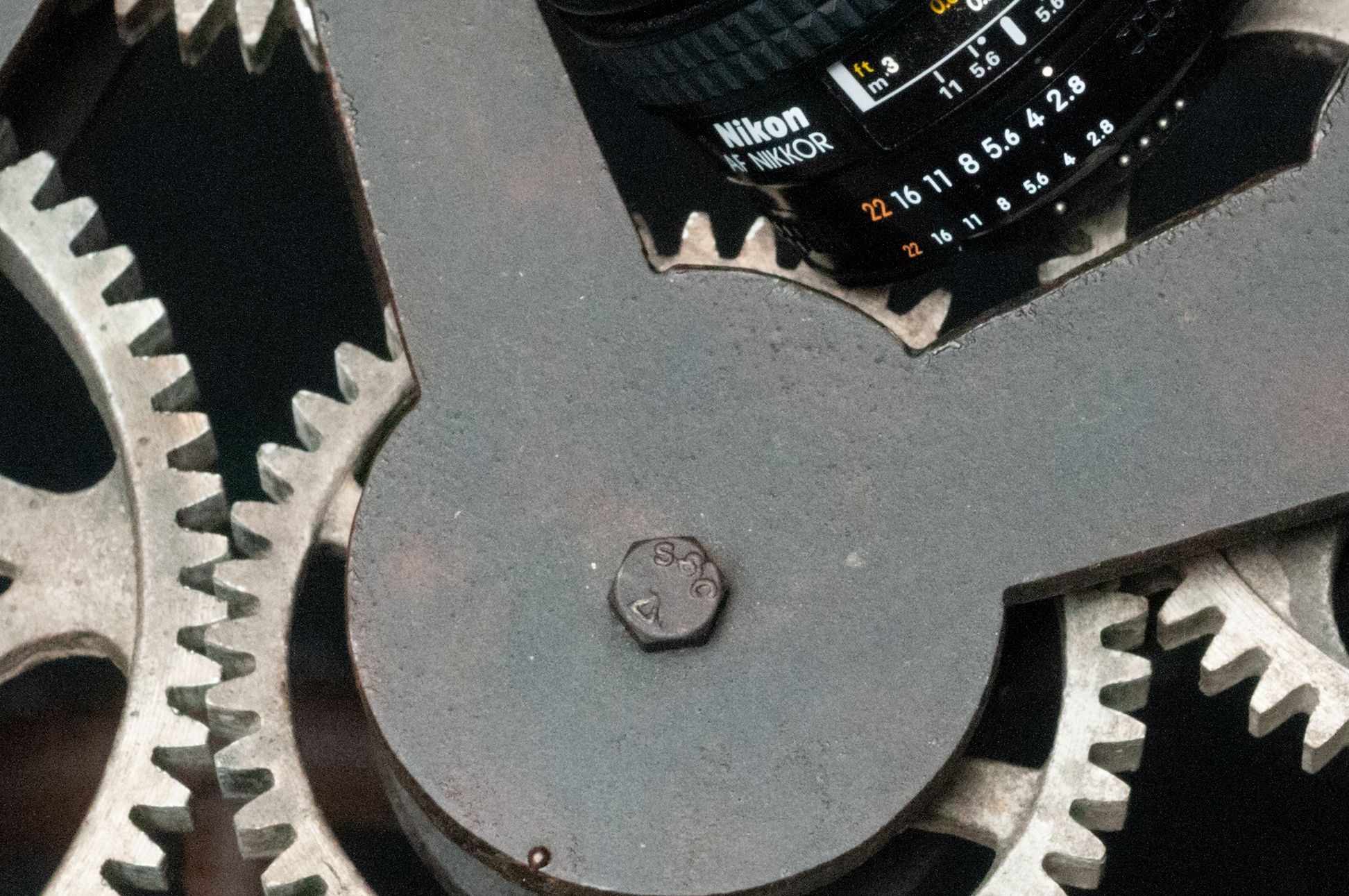
The D300s results.
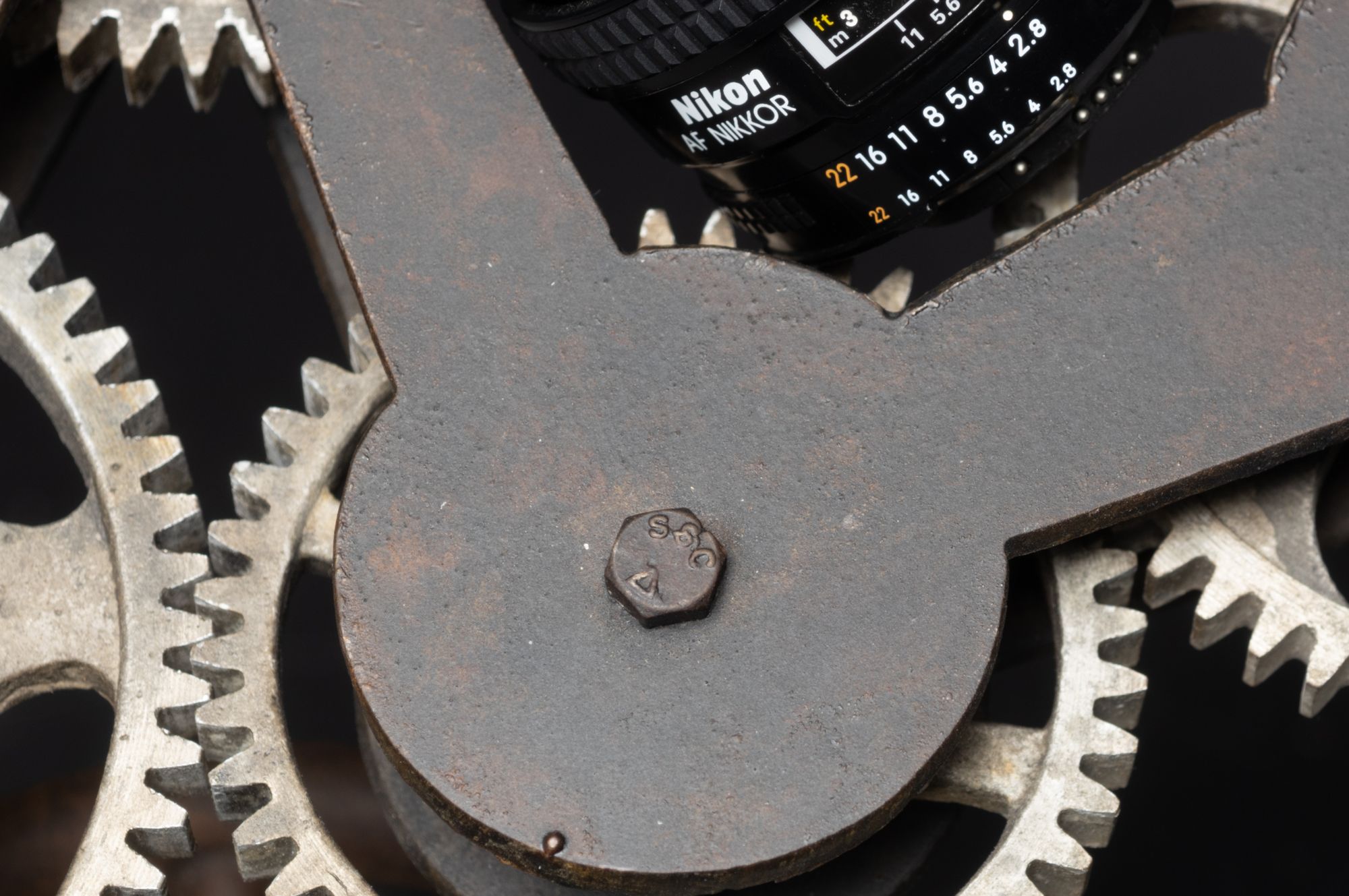
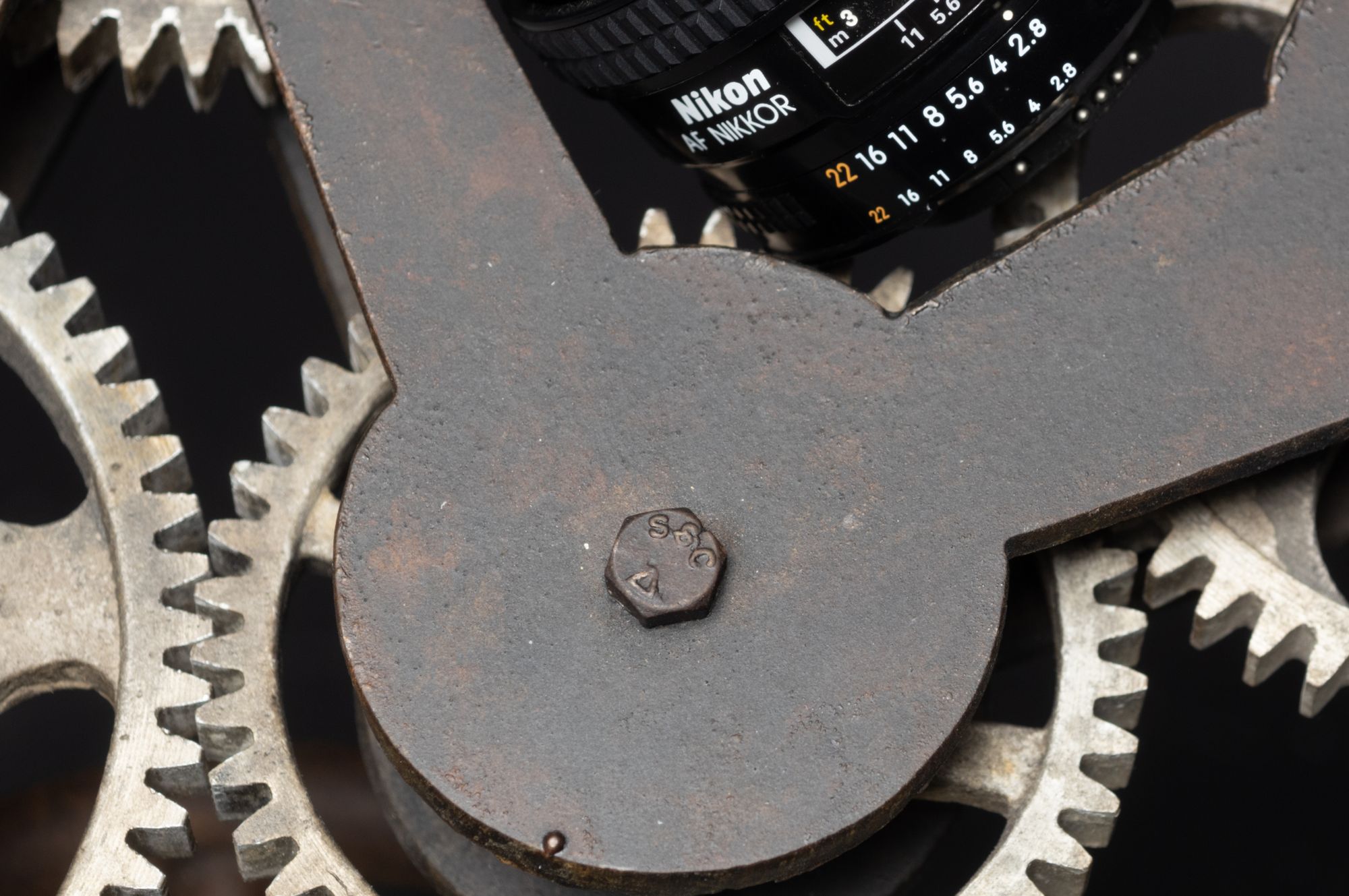
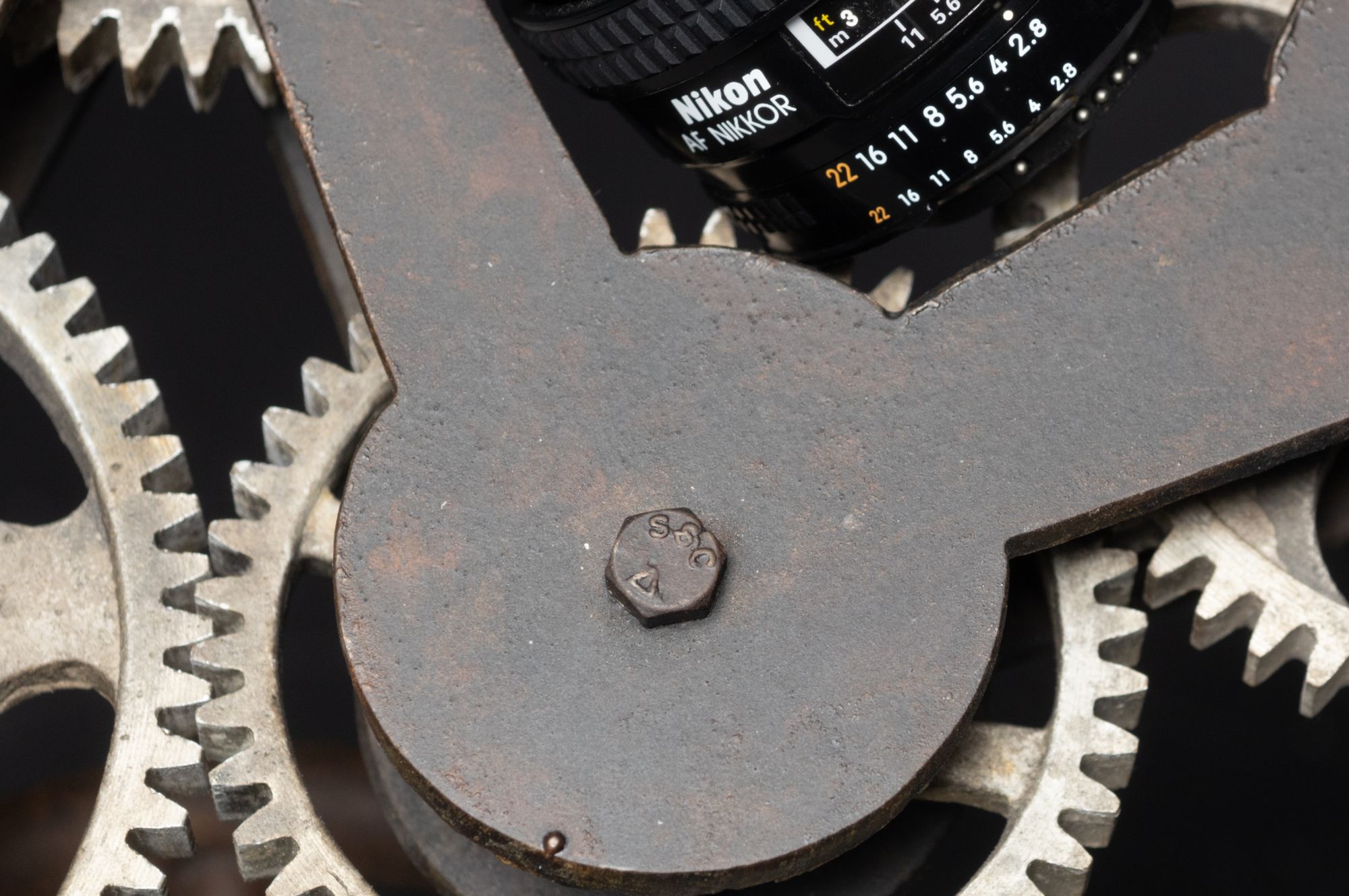

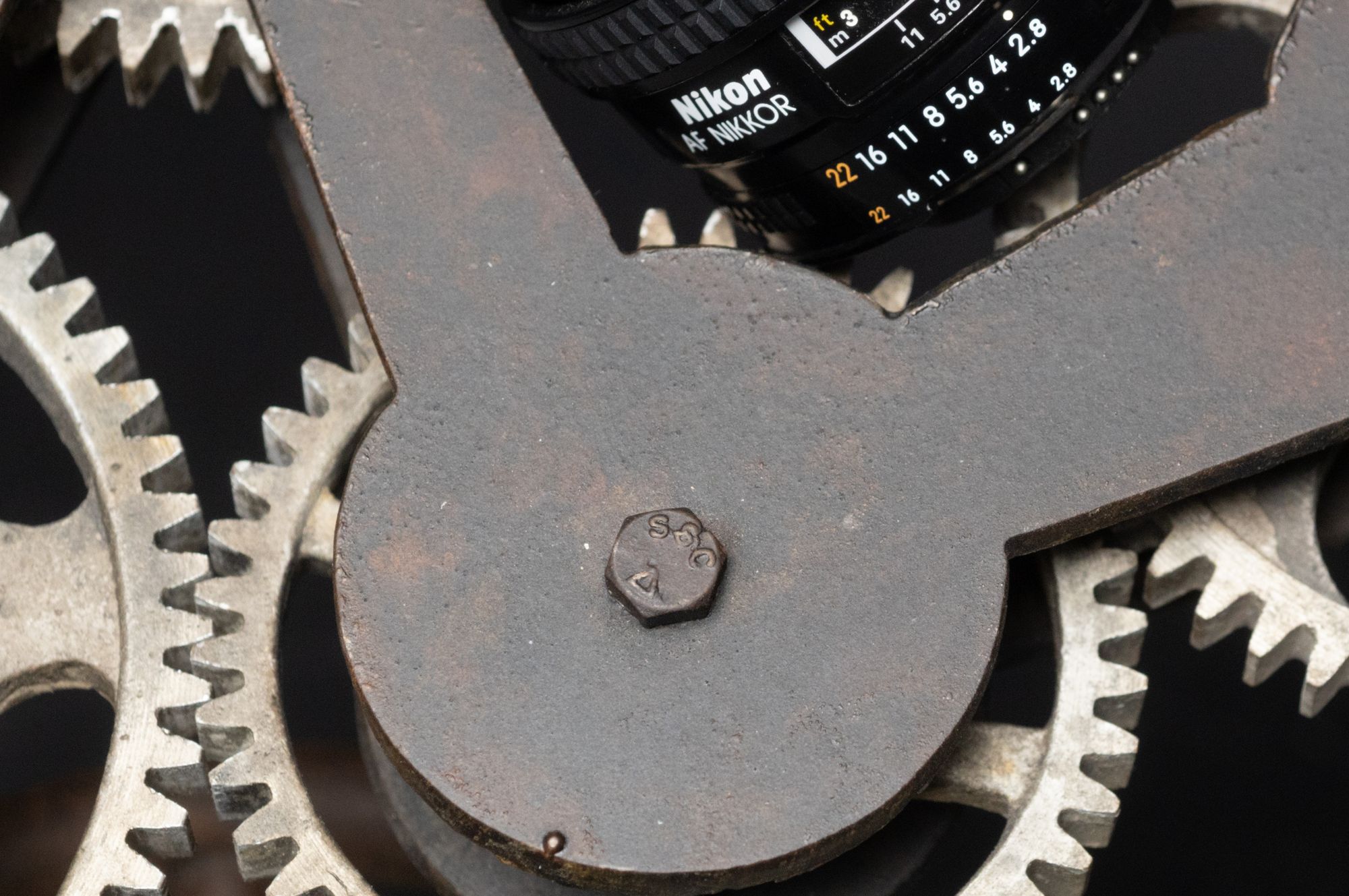
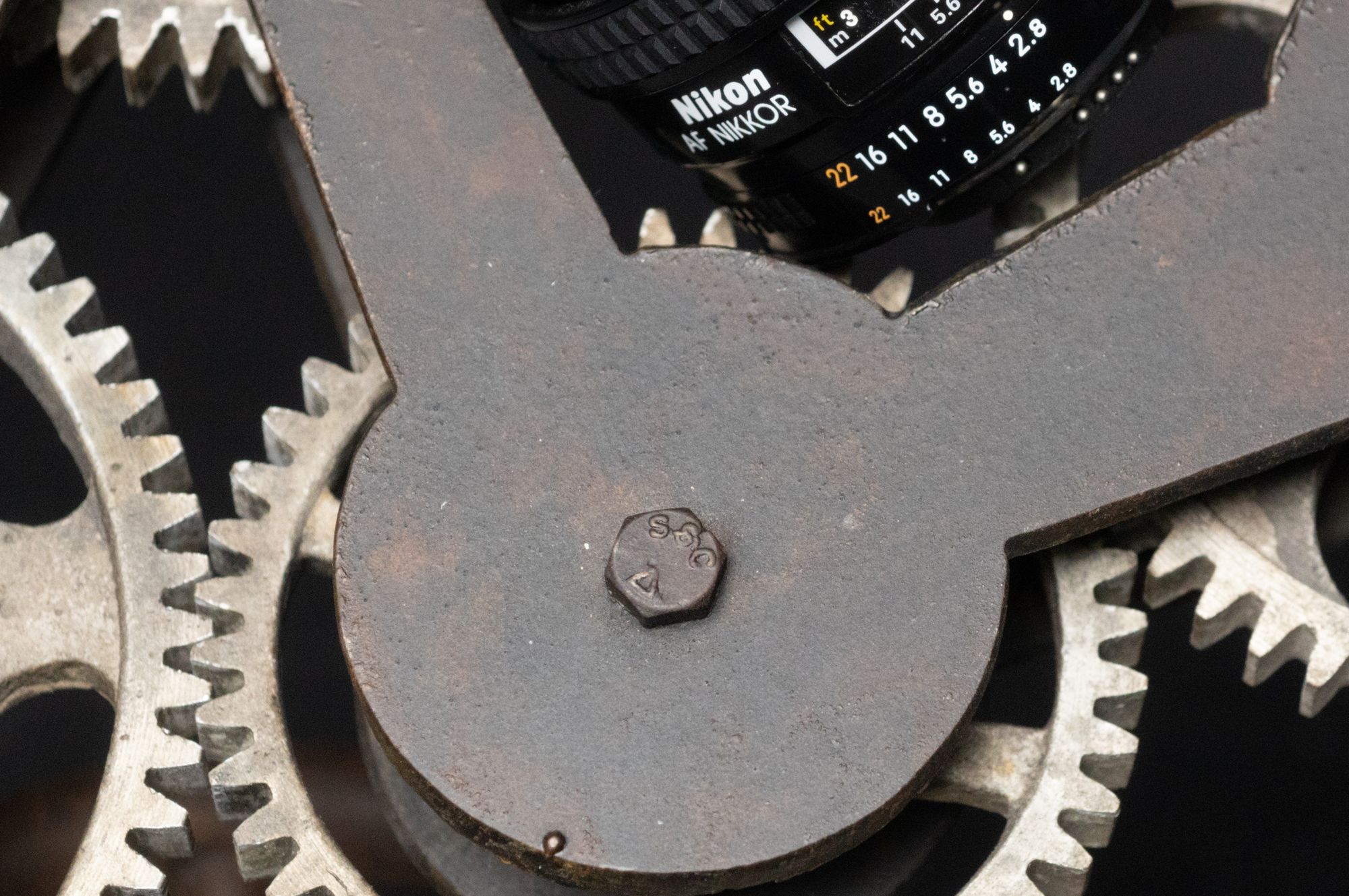
The EOS R results.
And let's showcase the 800 ISO results:
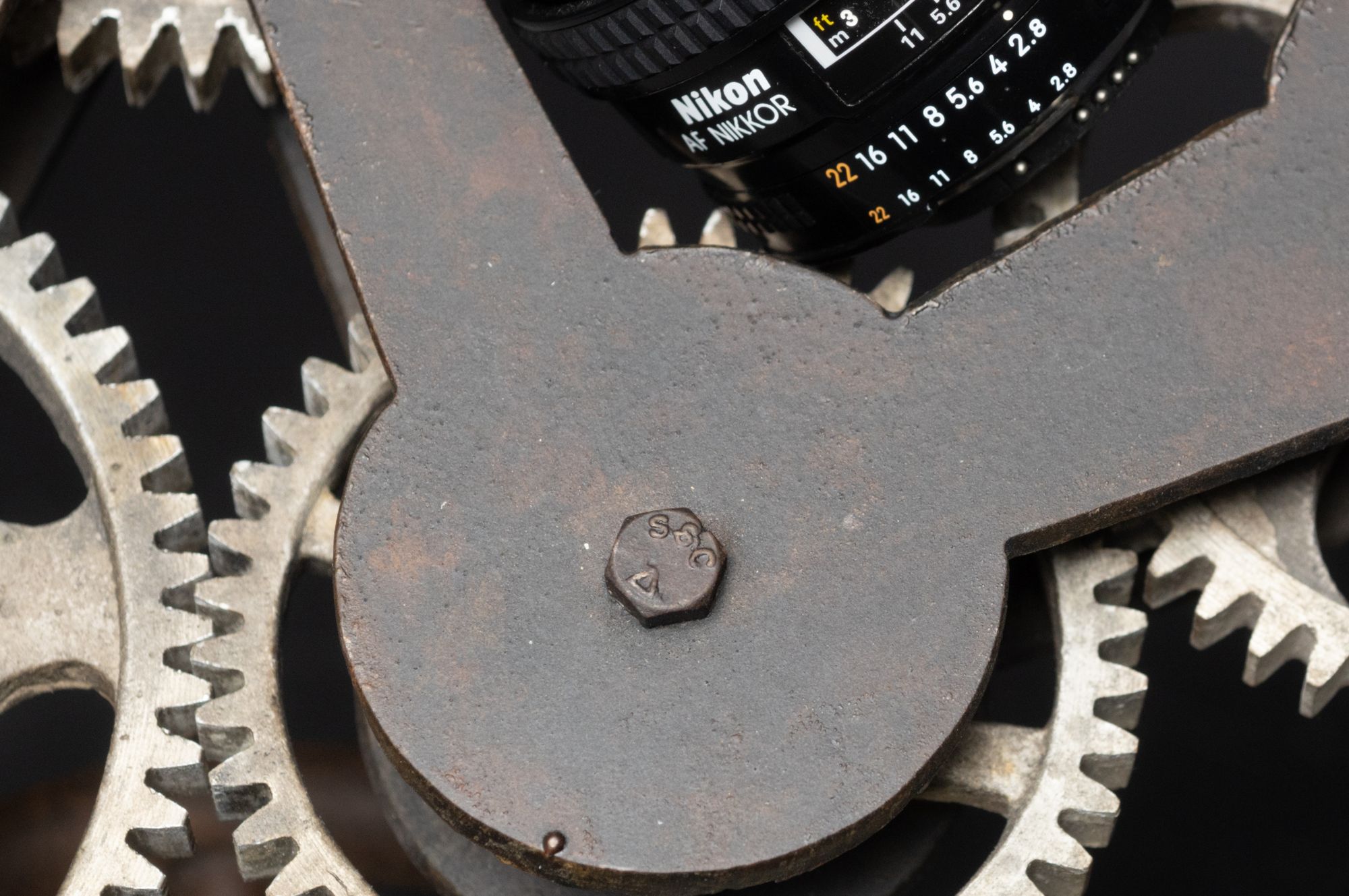
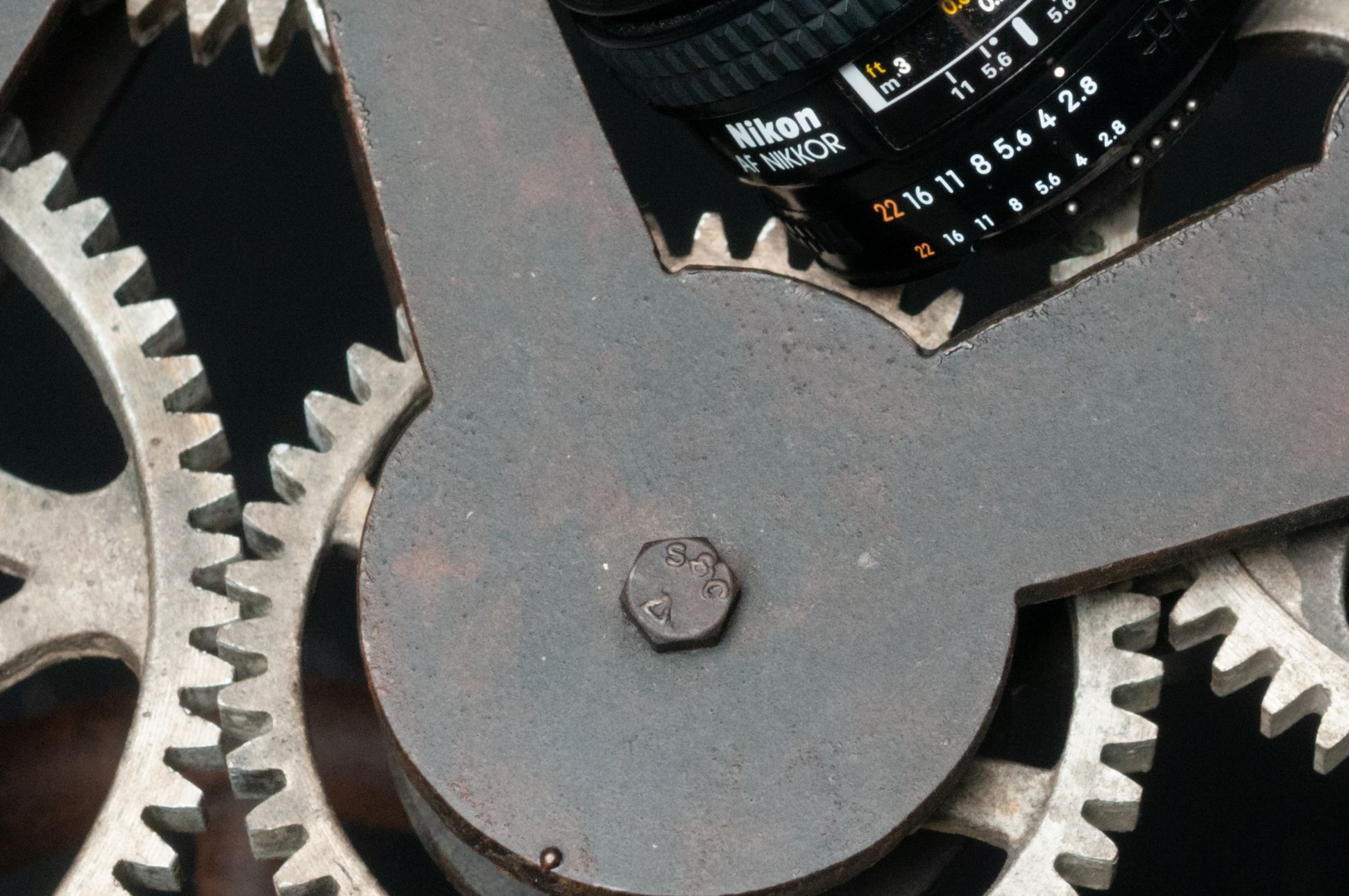
EOS R on the left, D300s on the right.
The D300s really starts to suffer from noise around 1600, and 3200 is awful. The image is reasonably sharp up to 400 and to a lesser degree, 800. You can see the difference the resolution and noise give in the fine details on the metal around the bolt labeled "SSC." On the EOS R result, you can see all the little marks very clearly, but the D300s is a bit soft.
Conclusion
I didn't hate the D300s. There, review over.
Ok, I have a little more to say than that. The D300s offers an impressive array of features, decent to actually good image quality if you get the hang of it, five decades of unique and amazing lenses, and good autofocus performance with modern lenses, all for under $100, and I consider that a win. With the 35-70, I found it was a bit limiting in the wide angle department, but with options like the AF 28-85 F/3.5-4.5 which I will be reviewing shortly, and the oddball AF 24-50 F/3.3-4.5, there are options to get cheap wide angles, or just buy an 18-55 kit lens for $30-$40 and just use it for the 18mm end. Really all you need to know about the D300s is if you have less than $200 to spend, and want good image quality and maybe two solid lenses, this is a great body to start on.
Comments?
Leave us your opinion.